Sony BE001012 CDMA 800 & 1900 MHz/AMPS User Manual Part 90
Sony Mobile Communications Inc CDMA 800 & 1900 MHz/AMPS Part 90
Sony >
Manual

Rhein Tech Laboratories, Inc. Client: Sony Ericsson Mobile Communications
360 Herndon Parkway Model: CM-52 (0.6W)
Suite 1400 Standards: FCC Pt 22, 24/IC RSS-129/-133
Herndon, VA 20170 Report Number: 2005084
http://www.rheintech.com Date: August 3, 2005
56 of 61
APPENDIX I: USER MANUAL
Please refer to the following pages.

Confidential
USERS MANUAL 1(41)
Document number Revision
4/198 17-LXE 108 566 Uen PA6
CM52 Integrator's Manual

Confidential
USERS MANUAL 2(41)
Document number Revision
4/198 17-LXE 108 566 Uen PA6
Table of Contents
1 Introduction to the Integrator’s Manual 5
1.1 OVERVIEW 5
1.2 HOW TO READ THE MANUAL 5
1.3 SERVICE AND SUPPORT 5
1.3.1 WEB PAGES 5
1.4 RELATED DOCUMENTS 6
1.5 ABBREVIATIONS 6
2 Integrating the CM52 Module 7
2.1 OVERVIEW 7
2.2 MECHANICAL DESCRIPTION 7
2.2.1 MECHANICAL DIMENSIONS 8
2.2.2 HEAT-SINK REQUIREMENTS 9
2.2.3 MOUNTING HOLES 9
2.3 SYSTEM CONNECTOR INTERFACE 10
2.3.1 MECHANICAL OVERVIEW 10
2.3.2 PINOUT 11
2.3.3 LOGIC LEVELS 12
2.4 POWER SUPPLY 12
2.4.1 POWER SUPPLY AND GROUND SIGNALS 12
2.4.1.1 POWER SUPPLY SIGNAL PINS 12
2.4.1.2 GROUND SIGNAL PINS 13
2.4.2 POWER CONSUMPTION 13
2.4.2.1 WAKEUP-INRUSH CURRENT 16
2.4.2.2 CONTACT-INRUSH CURRENT 16
2.4.2.3 POWER DOWN MODE (MINIMUM DC POWER CONSUMPTION) 16
2.4.3 VREF REQUIREMENTS 16
2.4.4 REAL TIME CLOCK (RTC) CIRCUIT 17
2.5 AUDIO INTERFACE 17
2.5.1 DIGITAL AUDIO 18
2.5.1.1 DATA FORMAT 18
2.5.1.2 TIMING 18
2.5.2 ANALOG AUDIO 20
2.6 SERIAL DATA INTERFACE 23
2.7 ANTENNA INTERFACE 24
2.7.1 ANTENNA CONNECTOR 24
2.7.2 RF OUTPUT POWER 26
2.7.3 CARRIER APPROVAL 26
2.7.4 ANTENNA DIAGNOSTICS 26
3 Recommended Circuitry 28
3.1 STATUS GROUP RECOMMENDED CIRCUITRY 28
3.1.1 MODULE_PWR_EN_B 29
3.1.2 VREF 29
3.1.3 HW_SD 29
3.2 DATA GROUP RECOMMENDED CIRCUITRY 30
3.2.1 VPPFLASH/DCD 31
3.3 PCM GROUP RECOMMENDED CIRCUITRY 32
3.4 ANALOG AUDIO GROUP RECOMMENDED CIRCUITRY 33
3.4.1 CREATING AN ANALOG GROUND 33
3.4.2 CREATING AN ANALOG REFERENCE VOLTAGE (BIAS) 33
3.4.3 ANALOG GROUND VS. AGND 34
3.4.4 MICROPHONE PATH 34
3.4.5 LOUDSPEAKER PATH 35
3.5 SYSTEM CONNECTOR IO FUNCTIONALITY 36

Confidential
USERS MANUAL 3(41)
Document number Revision
4/198 17-LXE 108 566 Uen PA6
4 Functional Description 39
5 Hints for Integrating the Module 39
5.1 PRECAUTIONS 39
5.2 WHERE TO INSTALL THE MODULE 39
5.3 SAFETY STANDARDS 39
5.4 ANTENNA 40
5.4.1 ANTENNA TYPE 40
5.4.2 ANTENNA PLACEMENT 40
5.5 POSSIBLE COMMUNICATION DISTURBANCES 40
6 Technical Data 41

Confidential
USERS MANUAL 4(41)
Document number Revision
4/198 17-LXE 108 566 Uen PA6
Tables
TABLE 1: SYSTEM CONNECTOR AND MATING PART NUMBERS........................................................................................................10
TABLE 2: PIN-OUT OF THE SYSTEM CONNECTOR HEADER ..............................................................................................................11
TABLE 3: CMOS OUTPUT / INPUT ELECTRICAL CHARACTERISTICS ................................................................................................12
TABLE 4: CM52 POWER SUPPLY REQUIREMENTS..........................................................................................................................12
TABLE 5: CM52 POWER SUPPLY SIGNALS ....................................................................................................................................13
TABLE 6: CM52 GROUND SIGNALS...............................................................................................................................................13
TABLE 7: VCC_AUX SUPPLY POWER CONSUMPTION ...................................................................................................................14
TABLE 8: VCC_MAIN SUPPLY POWER CONSUMPTION..................................................................................................................15
TABLE 9: VREF SUPPLY DETAILS.................................................................................................................................................16
TABLE 10: CM52 AUDIO SIGNALS.................................................................................................................................................17
TABLE 11: CM52 DIGITAL AUDIO SIGNALS....................................................................................................................................18
TABLE 12: PCM TIMING PARAMETERS..........................................................................................................................................19
TABLE 13: CM52 ANALOG AUDIO SIGNALS...................................................................................................................................20
TABLE 14: AUDIO CHARACTERISTICS ............................................................................................................................................20
TABLE 15: SERIAL DATA CHANNELS .............................................................................................................................................23
TABLE 16: MOBILE STATION NOMINAL ANALOG POWER LEVELS....................................................................................................26
TABLE 17: MOBILE STATION CDMA MAXIMUM OUTPUT POWER ....................................................................................................26
TABLE 18: PIN DIRECTION FOR GENERAL PURPOSE SIGNALS.........................................................................................................38
Figures
FIGURE 1: CM52 PRIMARY SIDE .....................................................................................................................................................7
FIGURE 2: CM52 SECONDARY SIDE ................................................................................................................................................7
FIGURE 3: MECHANICAL DIMENSIONS DRAWING...............................................................................................................................8
FIGURE 4: 40-PIN SYSTEM CONNECTOR ........................................................................................................................................10
FIGURE 5: 40-PIN SYSTEM CONNECTOR PIN NUMBERING...............................................................................................................10
FIGURE 6: RTC FUNCTIONAL BLOCK DIAGRAM .............................................................................................................................17
FIGURE 8: PCM TIMING DIAGRAM .................................................................................................................................................19
FIGURE 9: COLOR AND KEYING FOR VARIOUS FAKRA CONNECTORS .............................................................................................24
FIGURE 10: ANTENNA DIAGNOSTIC CIRCUIT...................................................................................................................................27
Revision History
Release Date Summary of Changes
PA1 05/07/2004 Initial Draft
PA2 09/01/2004 Formatting
PA3 11/17/2004 Updated Chapters 1 & 2
PA4 11/29/2004 Updated with review feedback
PA5 12/1/2004 Updated the List of Tables and Figures
PA6 06/16/2005 Current Consumption Table, RTC Block Diagram, Mechanical Drawing

Confidential
USERS MANUAL 5(41)
Document number Revision
4/198 17-LXE 108 566 Uen PA6
1 Introduction to the Integrator’s Manual
1.1 Overview
This manual is for use as a guide to the setup, installation, and use of the CM52 module
into your application. The module may be tested using the developer’s board, which is
supplied together with all the necessary tools in the Developer’s Kit.
1.2 How to read the manual
This manual is divided into six chapters:
Chapter 1 gives a general view of the integrator’s manual. A list of related documents
as well as a list of abbreviations, used throughout the manual, is also included.
Information concerning service and support is also presented.
Chapter 2 focuses on helping the hardware developer to integrate the CM52 hardware
into their application. An overview of the mechanical and electrical information is
provided. Also, interface specifications, RF output power, and power supply issues are
included in this chapter.
Chapter 3 contains information on recommended circuitry needed to ensure proper
performance from the CM52 module.
Chapter 4 describes several of the common cellular functions available with the CM52.
Chapter 5 provides some hints for integrating the module.
Chapter 6 provides a summary of the technical data for the CM52 module.
1.3 Service and Support
1.3.1 Web Pages
Please look at our web page for more information about where you can buy our
modules or for recommendations of accessories and components. The address is:
http://www.sonyericsson.com/m2m
To register for product news and announcements or for product questions, contact the
Sony Ericsson modules technical support group:
•Telephone: 919-472-1122
•Email: M2Msupport.Americas@sonyericsson.com
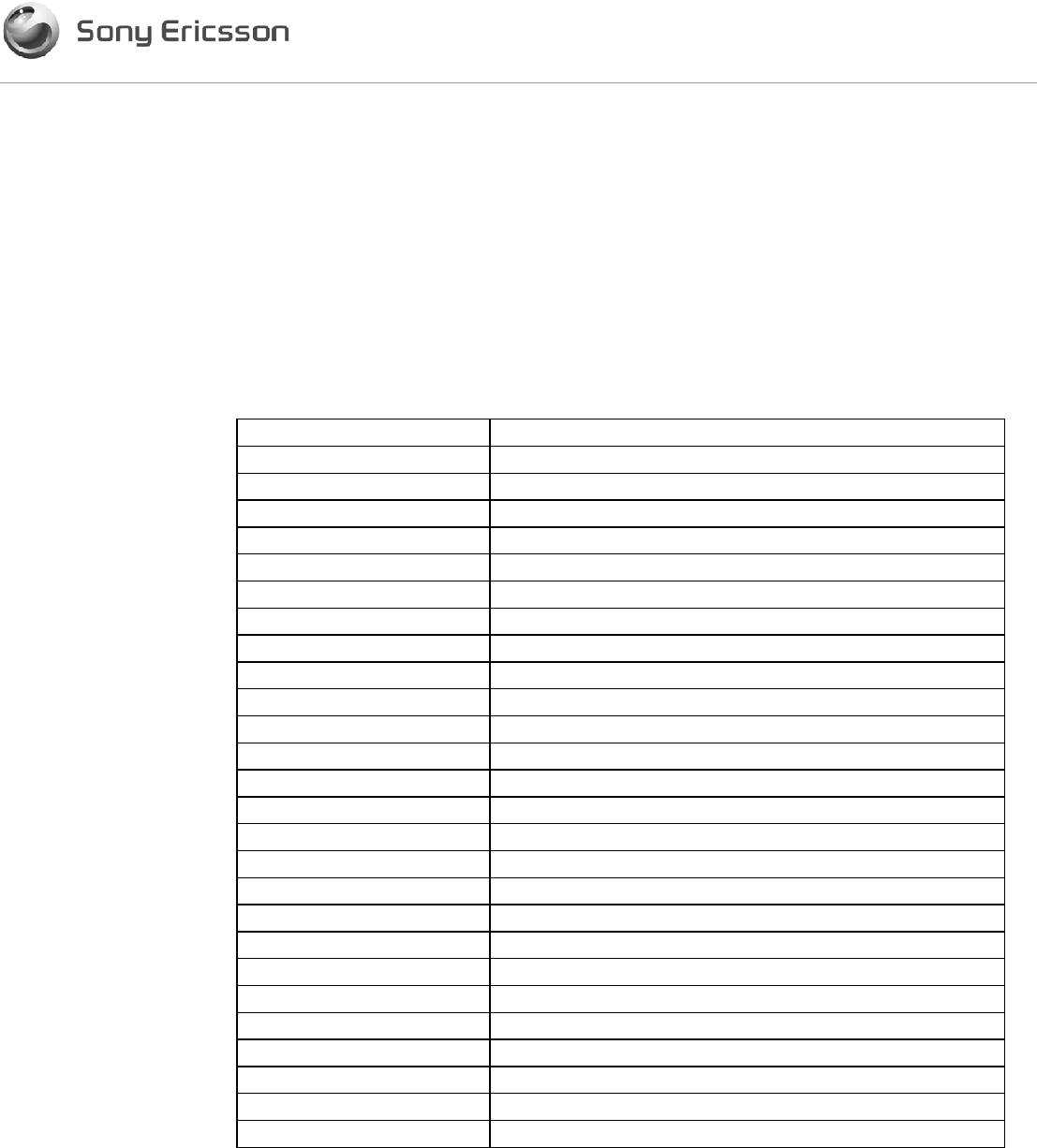
Confidential
USERS MANUAL 6(41)
Document number Revision
4/198 17-LXE 108 566 Uen PA6
1.4 Related Documents
CM52 AT Command Manual – Details the AT command interface for the CM52
The CM52 is based upon the following mobile standards:
•IS-2000 Release 0 (1XRTT), MOB_P_REV – CDMA protocol
•TIA/EIA/IS-91 –Mobile Station – Base Station Compatibility Standard for 800
MHz Analog Cellular
•TIA/EIA-98-D – Recommended Minimum Performance Standards for Dual-Mode
Spread Spectrum Mobile Stations
1.5 Abbreviations
AGND Analog Reference
AMPS Advanced Mobile Phone System
AT Attention Command
CDMA Code Division Multiple Access
CTS Clear to Send
DCD Data Carrier Detect
DFMS Data from Mobile Station
DTMS Data to Mobile Station
DTR Data Terminal Ready
EMI Electromagnetic Interference
ESD Electrostatic Discharge
GND Chassis GrouND
IRA International Reference Alphabet
LSB Least Significant Bit
ME Mobile Equipment
MO Mobile Originated
MS Mobile Station
MT Mobile Terminated
OEM Original Equipment Manufacturer
PCB Printed Circuit Board
PCM Pulse Code Modulation
PIN Personal Identification Number
RD Receive Data, also known as DFMS
RF Radio Frequency
RTS Request to Send
SMS Short Message Service
TD Transmit Data, also know as DTMS
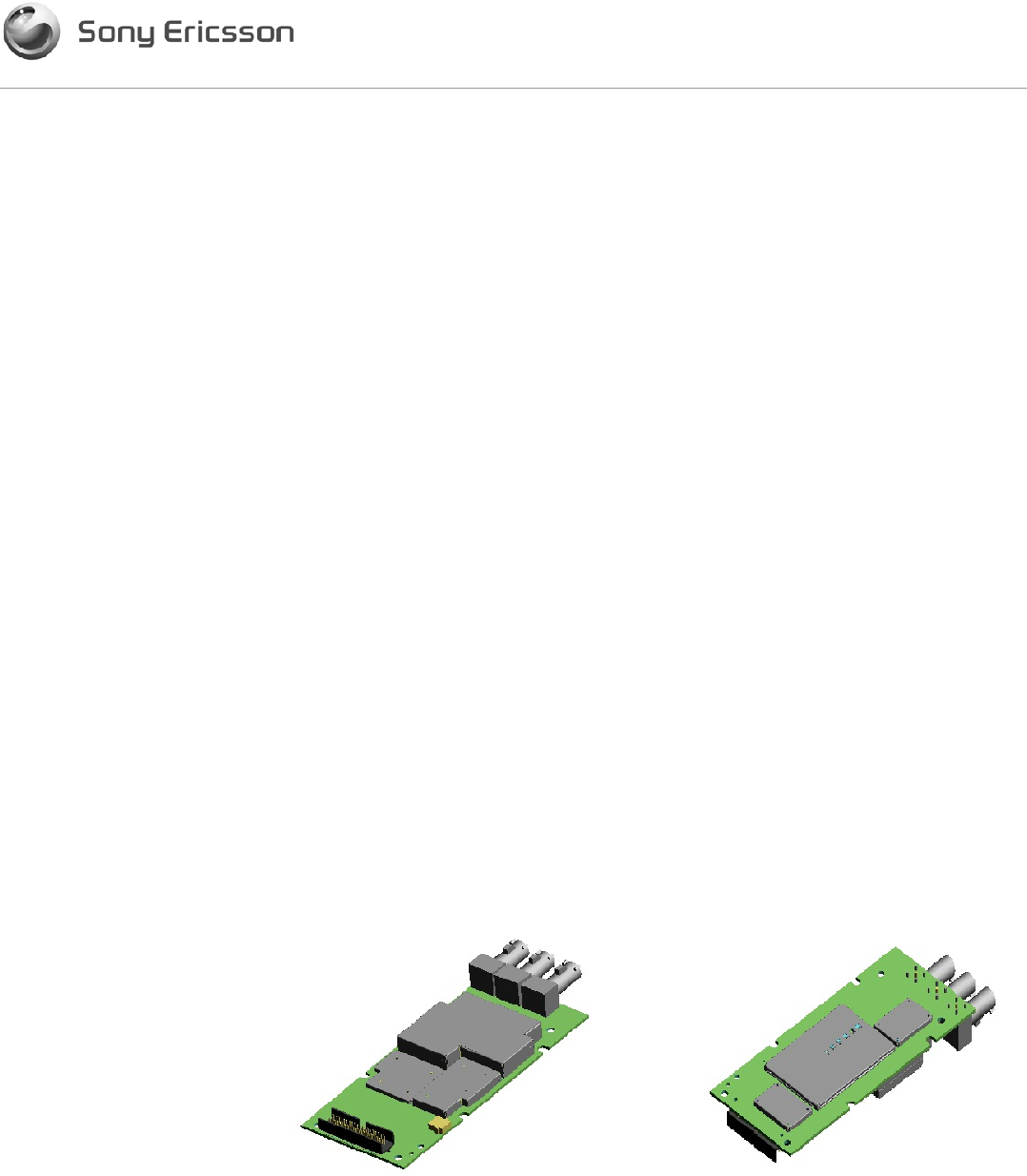
Confidential
USERS MANUAL 7(41)
Document number Revision
4/198 17-LXE 108 566 Uen PA6
2 Integrating the CM52 Module
2.1 Overview
The CM52 is a dual band, dual mode CDMA transceiver module. It operates in the 800
MHz band for CDMA and AMPS and in the 1900 MHz band for CDMA. It is designed
for consumer and OEM industrial voice and data applications.
The CM52 module is intended for mounting into an application developer’s chassis to
provide wireless communication capability for the product. The target chassis could be
in a wide variety of forms such as a residential electric meter, a point of sale terminal,
an alarm panel, or an automobile console. All initial configuration, mode control, and
operational commands are issued to the module over an RS-232 serial port using a
flexible AT command format. The module circuitry has been designed to meet the
environmental requirements of a large range of commercial and industrial users.
2.2 Mechanical Description
The CM52 has no mechanical elements other than the main PCB assembly. All critical
electronic components are shielded using six cans to prevent internal and external
electromagnetic interference from degrading the module’s performance and to prevent
the module from interfering with other nearby devices. The module is plugged into the
fixed mating connector and secured with four screws.
The antenna interface is provided via a board mounted RF connector at the opposite
end of the board from the system connector. See Section 2.8 for more information on
antenna connector options.
The module has no keypad, display, microphone, speaker, or battery. The following
figures show a mechanical drawing and physical dimensions of the module.
Note! All the measurements are in millimeters.
Figure 1: CM52 Primary Side Figure 2: CM52 Secondary Side
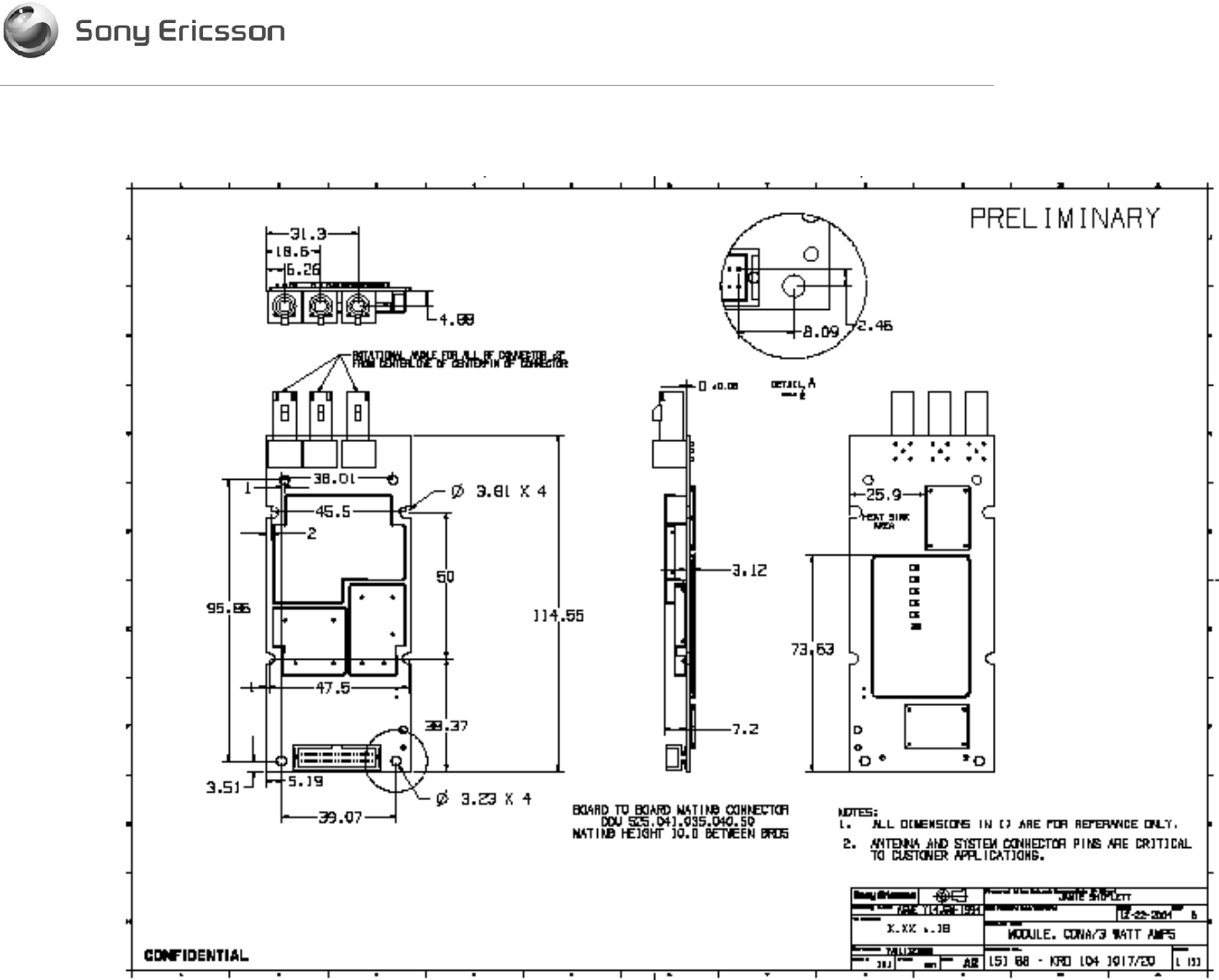
Confidential
USERS MANUAL 8(41)
Document number Revision
4/198 17-LXE 108 566 Uen PA6
2.2.1 Mechanical Dimensions
Figure 3: Mechanical Dimensions Drawing

Confidential
USERS MANUAL 9(41)
Document number Revision
4/198 17-LXE 108 566 Uen PA6
2.2.2 Heat-Sink Requirements
The application is required to provide a heat-sink for the 3W AMPS capabilities of the
CM52.
The application should be designed to provide a heat sink with a thermal resistance of
4.0 oC/W.
For applications that disable the 3W mode (Class I) and only operate in 0.6W mode
(Class III) a heat-sink is not required.
2.2.3 Mounting Holes
Mounting holes and tabs are provided for proper mechanical support of the CM52
module in the customer’s application. OEM application must provide sufficient
mechanical retention using the mounting holes and/or tabs or some other means. The
system connector and RF connector connections should not be used as a means of
mechanical support. Also, please note that the mounting holes may not substitute for
the actual grounding pins provided via the system connector.

Confidential
USERS MANUAL 10(41)
Document number Revision
4/198 17-LXE 108 566 Uen PA6
2.3 System Connector Interface
2.3.1 Mechanical Overview
External interfaces to the module are made primarily through a 40 pin, standard 0.050-
inch pitch, ODU header show below.
Figure 4: 40-Pin System Connector
Figure 5: 40-Pin System Connector Pin Numbering
Description ODU Part Number Dimension A Dimension B
System Connector 515.569.035.140.xxx 24.13 mm 22.86 mm
Mating Ribbon Connector 525.060.035.040.xxx
SMT Mating Header 525.041.035.040.xxx
Ribbon cable, AWG 30 921.659.031.040.000
Table 1: System Connector and Mating Part Numbers
Please consult the ODU site for more information on mating options: http://www.odu.de
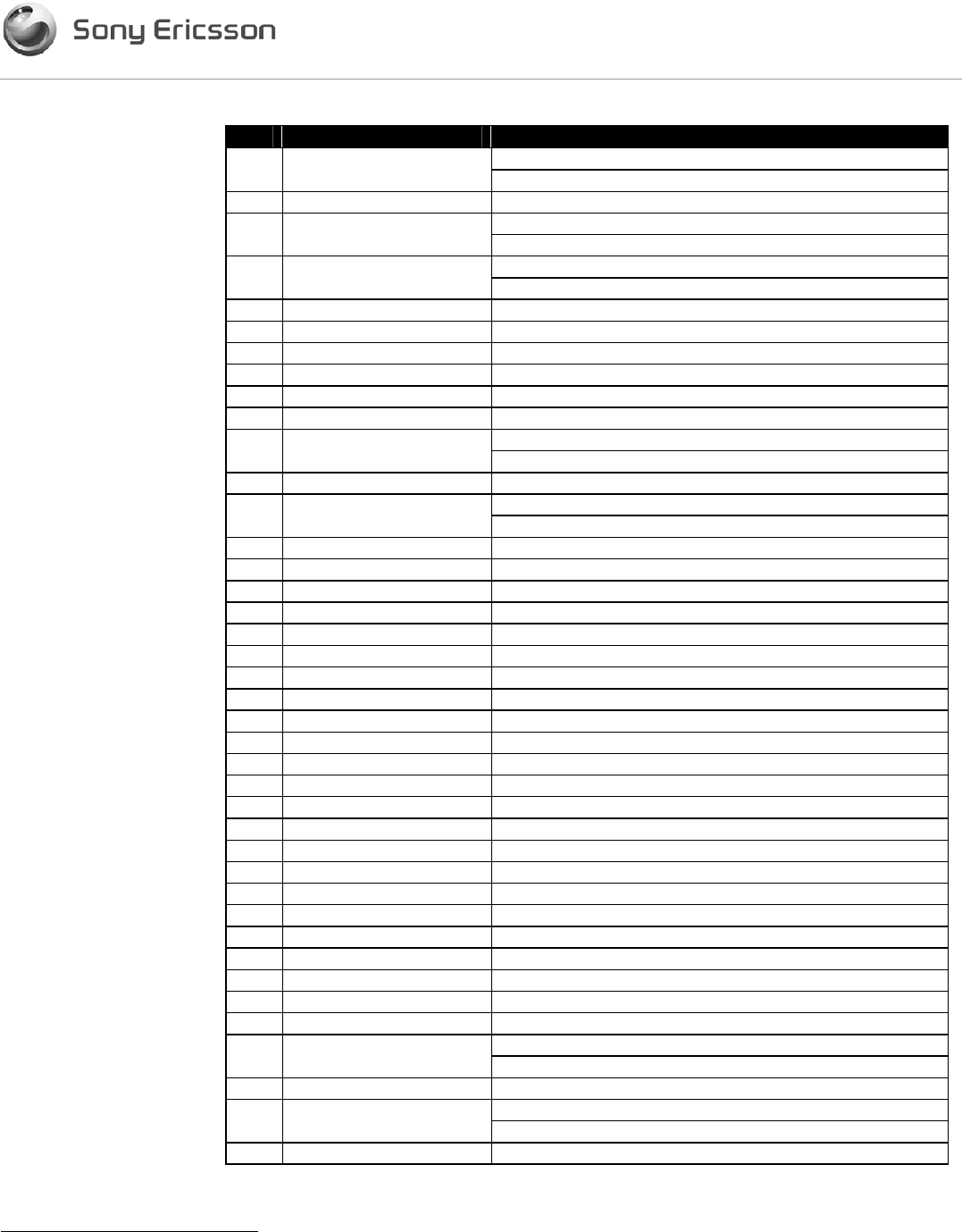
Confidential
USERS MANUAL 11(41)
Document number Revision
4/198 17-LXE 108 566 Uen PA6
2.3.2 Pinout
Pin Signal Description
Reserved1 I/O_1 / Timemark
1 PPS output from GPS chip 1
2 VREF Logic Voltage Reference
Reserved3 I/O_3 / GPS_FIX
Logic HIGH signal to indicate active GPS Fix 1
Reserved4 I/O_4 / VRTC
Supply pin for RTC 2and GPS regulators1
5 GND Chassis Ground
6 GND Chassis Ground
7 AFMS Analog Audio from module
8 GND Chassis Ground
9 AGND Analog Reference
10 ATMS Analog Audio to module
Reserved11 INPUT1 / UART3_RX
Receive Data for UART3 1
12 MODULE_PWR_EN_B Switches the module on/off (hardware-wise), active low
Reserved13 OUTPUT1 / UART3_TX
Transmit Data for UART3 1
14 OUTPUT2 Reserved
15 HW_SD Hardware shutdown
16 INPUT2 Reserved
17 PCMCLK PCM Clock output from Module to Application
18 PCMSYNC PCM Frame sync from Module to Application
19 PCMULD PCM Voice input to Module from Application
20 PCMDLD PCM Voice output from Module to Application
21 GND Chassis Ground
22 GND Chassis Ground
23 DCD / VPPFLASH Data Carrier Detect & Flash programming voltage input
24 RINGER Ringer output
25 CTS Clear to send
26 DTR Data Terminal Ready
27 TD Transmit data, also known as DTMS
28 RTS Request to Send
29 VCC_AUX 13.8 VDC supply input
30 RD Receive data, also known as DFMS
31 VCC_AUX 13.8 VDC supply input
32 VCC_AUX 13.8 VDC supply input
33 VCC_MAIN 5 VDC regulated supply input
34 VCC_MAIN 5 VDC regulated supply input
35 SDA_SPI_IN Reserved
36 SCL_SPI_CLK Reserved
Transmit Data for UART237 SYS_DTM_2
Transmit Data for GPS 1
38 SPI_OUT Reserved
Receive Data for UART239 SYS_DFM_2
Receive Data for GPS 1
40 RI Ring Indicator
Table 2: Pin-out of the System Connector Header
1Default function if GPS option on board.
2Default function if RTC option on board
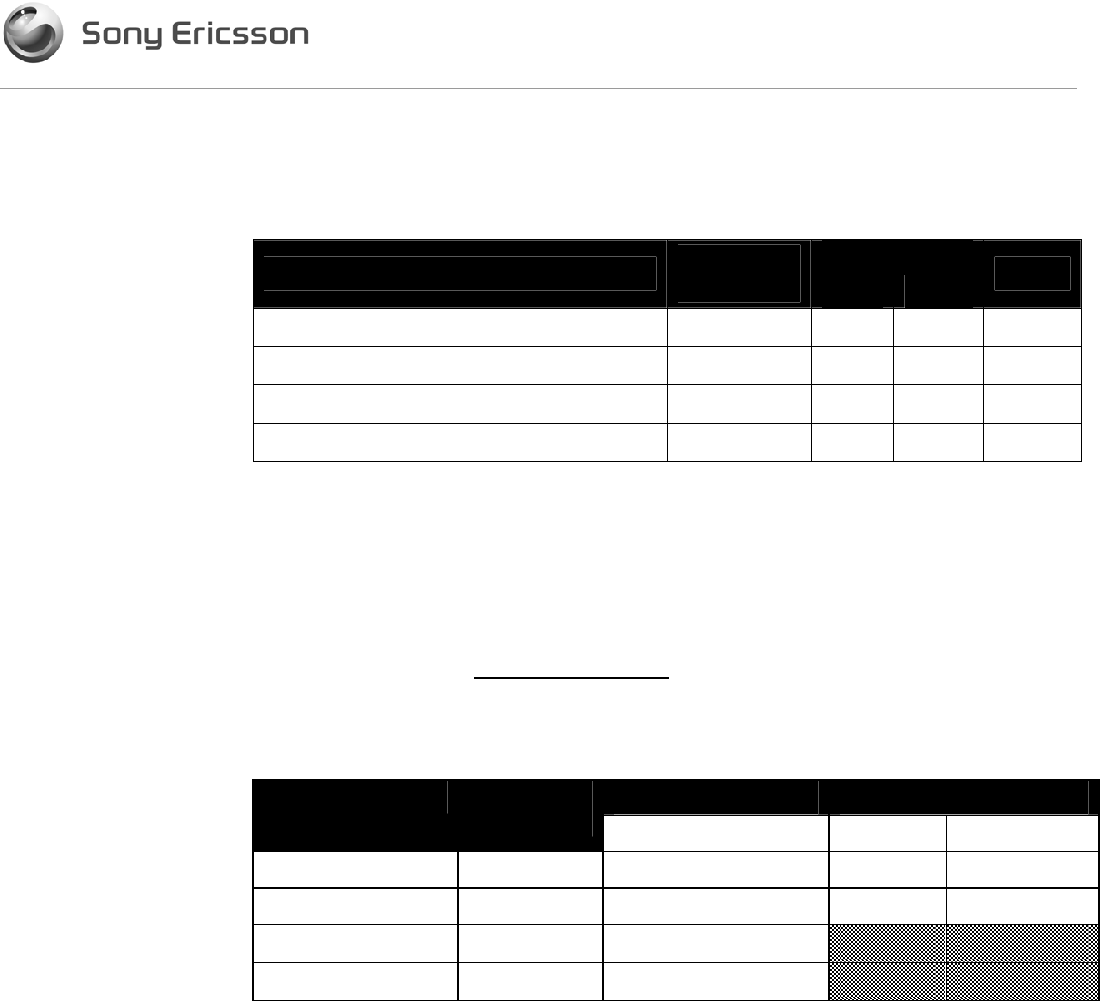
Confidential
USERS MANUAL 12(41)
Document number Revision
4/198 17-LXE 108 566 Uen PA6
2.3.3 Logic Levels
Many of the signals present in the interface are CMOS signals where the following
levels apply. The nominal voltage level for the CMOS signals is 2.9 V.
Limits
Parameters Test
Conditions Min Max Units
High level output voltage (IOH = 800 µA) VOH 2.45 3.1 Volts
Low level output voltage (IOL= 800 µA) VOL0 0.45 Volts
High level input voltage (VIH= 800 µA) VIH1.9 3.1 Volts
Low level input voltage (VIL = 800 µA) VIL 0 0.9 Volts
Table 3: CMOS Output / Input Electrical Characteristics
2.4 Power Supply
The CM52 requires a dual DC power supply implementation in the application.
VCC_MAIN provides power to the entire radio while VCC_AUX provides power for the
3-Watt functionality and biasing for the RF switches. VCC_AUX must be present if the
3W option is provided even if it is not used. If the 3W circuitry is not populated then
VCC_AUX is not required.
The following table summarizes the power supply requirements from the application.
Max. Current (Amps) Max. Ripple (mVpp)
Input Supply Voltage
(Volts DC) Operation 0- 4KHz 4 KHz-10MHz
VCC_MAIN 5.00 ± 10% 1.0 100mVpp 50mVpp
VCC_AUX 13.8 ± 20% 1.3 600mVpp 240mVpp
VRTC(no GPS) 1.8 to 3.9 1.2 µ
VRTC(with GPS) 3.4 to 3.9 500 µ
Table 4: CM52 Power Supply Requirements
2.4.1 Power Supply and Ground Signals
2.4.1.1 Power Supply Signal Pins
Following is a list of the power supply pins:
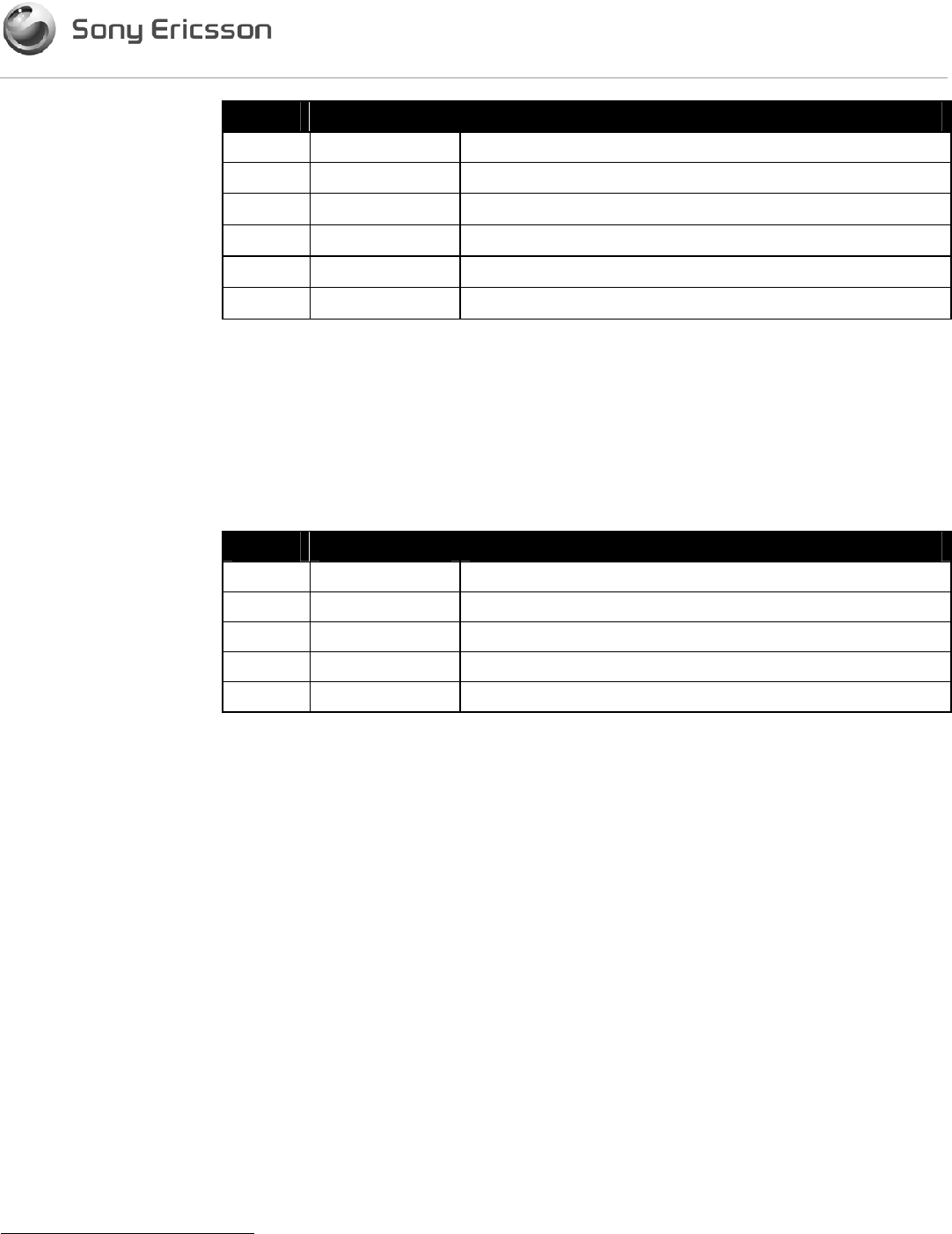
Confidential
USERS MANUAL 13(41)
Document number Revision
4/198 17-LXE 108 566 Uen PA6
Pin Signal Description
4VRTC31.8 V to 3.9V ( 3.4V to 3.9V if GPS mounted)
29 VCC_AUX 13.8 volt ±20%
31 VCC_AUX 13.8 volt ±20%
32 VCC_AUX 13.8 volt ±20%
33 VCC_MAIN 5 volt ±10% regulated
34 VCC_MAIN 5 volt ±10% regulated
Table 5: CM52 Power Supply Signals
2.4.1.2 Ground Signal Pins3
The ground signal in the CM52 is Digital Ground, GND, connected to the system
connector interface through pin numbers 5, 6, 8, 21 and 22.
Following is a list of the ground pins:
Pin Signal Description
5GND Digital Ground
6GND Digital Ground
8GND Digital Ground
21 GND Digital Ground
22 GND Digital Ground
Table 6: CM52 Ground Signals
Digital Ground (GND) is the logical reference of all digital signals in the System
Interface as well as the DC return of the power supply signal, VCC_MAIN and
VCC_AUX (used for AMPS Class I operation). All 5 ground pins in the module need to
be connected to the application ground. The PCB mounting holes will not substitute the
regular ground connections.
2.4.2 Power Consumption
The following tables show typical and maximum currents that can be expected from the
module for various conditions.
3Only applicable to units with GPS or RTC functions
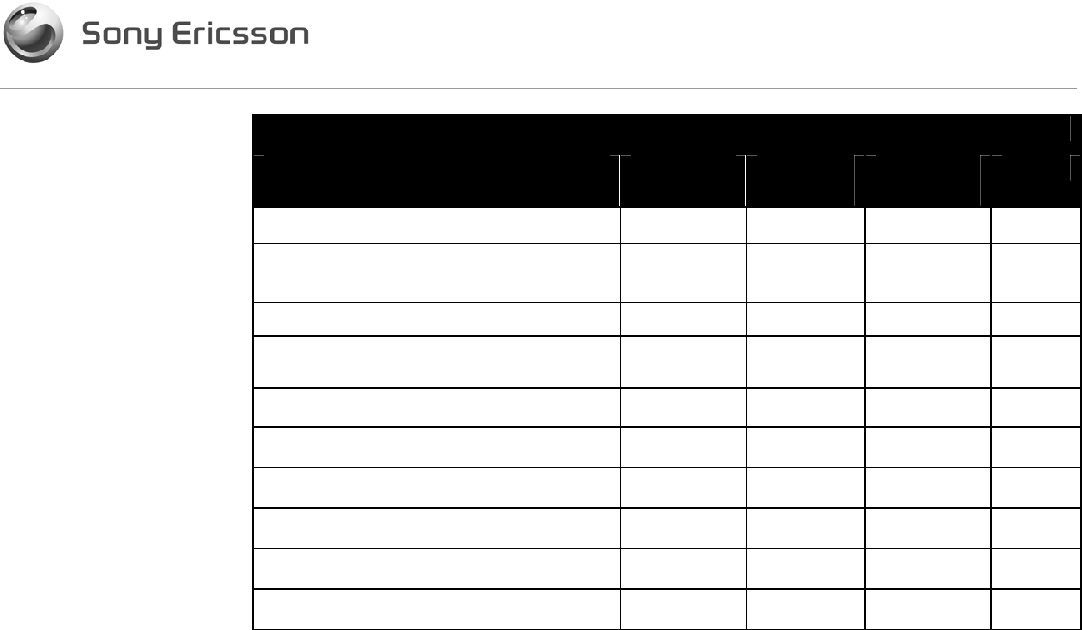
Confidential
USERS MANUAL 14(41)
Document number Revision
4/198 17-LXE 108 566 Uen PA6
[VCC_AUX power supply supports the 3W mode AMPS circuitry]
Parameter Minimum
Value Typical
Value Maximum
Value Units
Input Voltage 11 13.8 16.6 V
In a Call on Power Level 0
(Power Class I) 0.88 1.3 A
In a Call on Power Level 2 3.5 4.5 mA
AMPS Burst Duration for network
update 0.16 s
Stand-by/Idle mode (RX ON) 0.5 µA
Powered Down Current Draw 1 µA
Inrush Current (Entering PL0) 16 A
Duration of Inrush (Entering PL0) 40 µs
Inrush Current (contact) 28 A
Duration of Inrush (contact) 40 µs
Table 7: VCC_AUX Supply Power Consumption
Note: The typical values observed in AMPS call are made with voice channel set at
358.
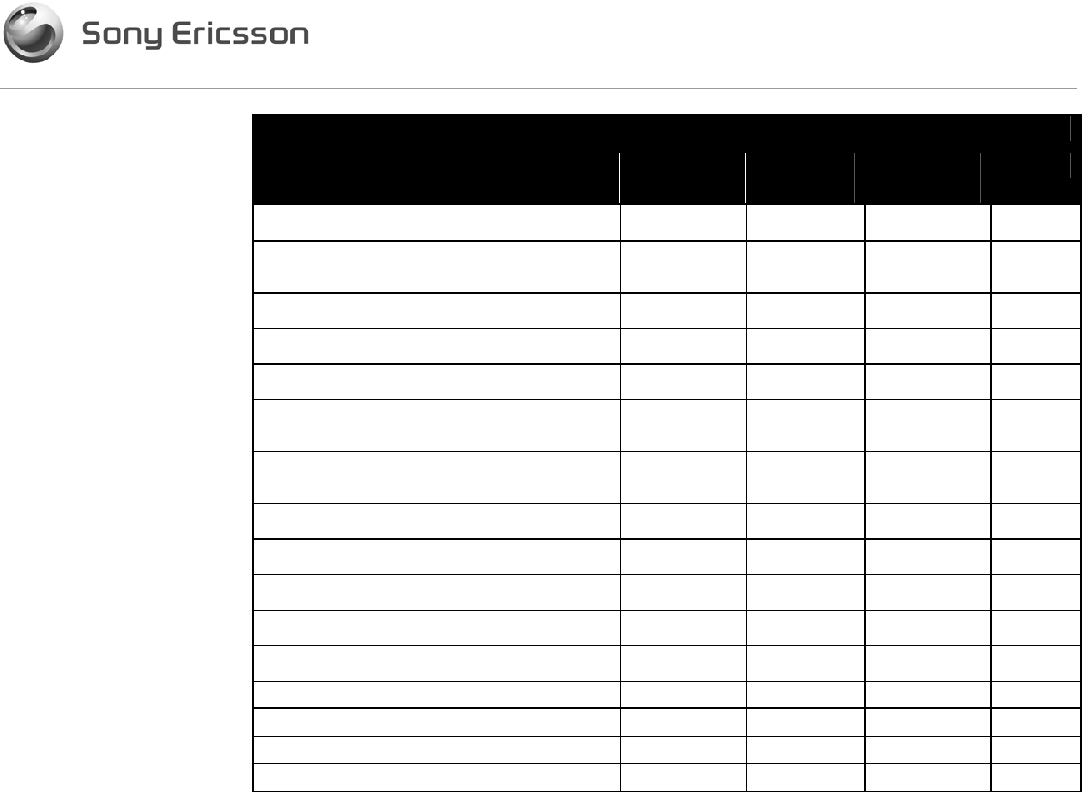
Confidential
USERS MANUAL 15(41)
Document number Revision
4/198 17-LXE 108 566 Uen PA6
[VCC_MAIN supply is the primary CM52 power supply]
Parameter Minimum
Value Typical
Value Maximum
Value Units
Input Voltage 4.5 5 5.5 V
In AMPS Call on Power Level 0
(Power Class I) 0.59 0.75 A
In AMPS Call on Power Level 2 0.83 1.0 A
In CDMA call-Cellular Mode 0.67 0.90 A
In CDMA call-PCS Mode 0.72 0.95 A
CDMA burst duration for Network
update 1.2 S
Standby/Idle Current Draw in
Slotted Mode (CDMA)
1.28 sec slot 9.6 mA
2.56 sec slot 7.2 mA
5.12 sec slot 4.5 mA
Stand-by/Idle mode (AMPS) 45 mA
Powered Down Current Draw 1 µA
Inrush Current (on wake up) 2.2 A
Duration of Inrush (on wake-up) 150 µs
Inrush Current (contact) 2.0 A
Duration of Inrush (contact) 50 µs
Table 8: VCC_MAIN Supply Power Consumption
Notes
1. The typical current measurements noted in CDMA mode are with the following
settings:
a. CDMA-Cellular (800MHz): Band = IS-2000, Cell-Power = -104dBm,
Channel Number 358
b. CDMA-PCS (1900MHz): Band = IS-2000, Cell-Power = -104dBm,
Channel Number 563
Maximum Slot Cycle Index for both 800MHz and 1900MHz modes = 1
2. The inrush current measurements noted here are with respect to the stand alone
CM52 module at room temperature, the results might vary when the CM52 is used
in the Customer Application.
3. Measurements are based on worst case scenario—CM52 with 3W option. Values
for CM52 with no 3W option could be marginally lower.
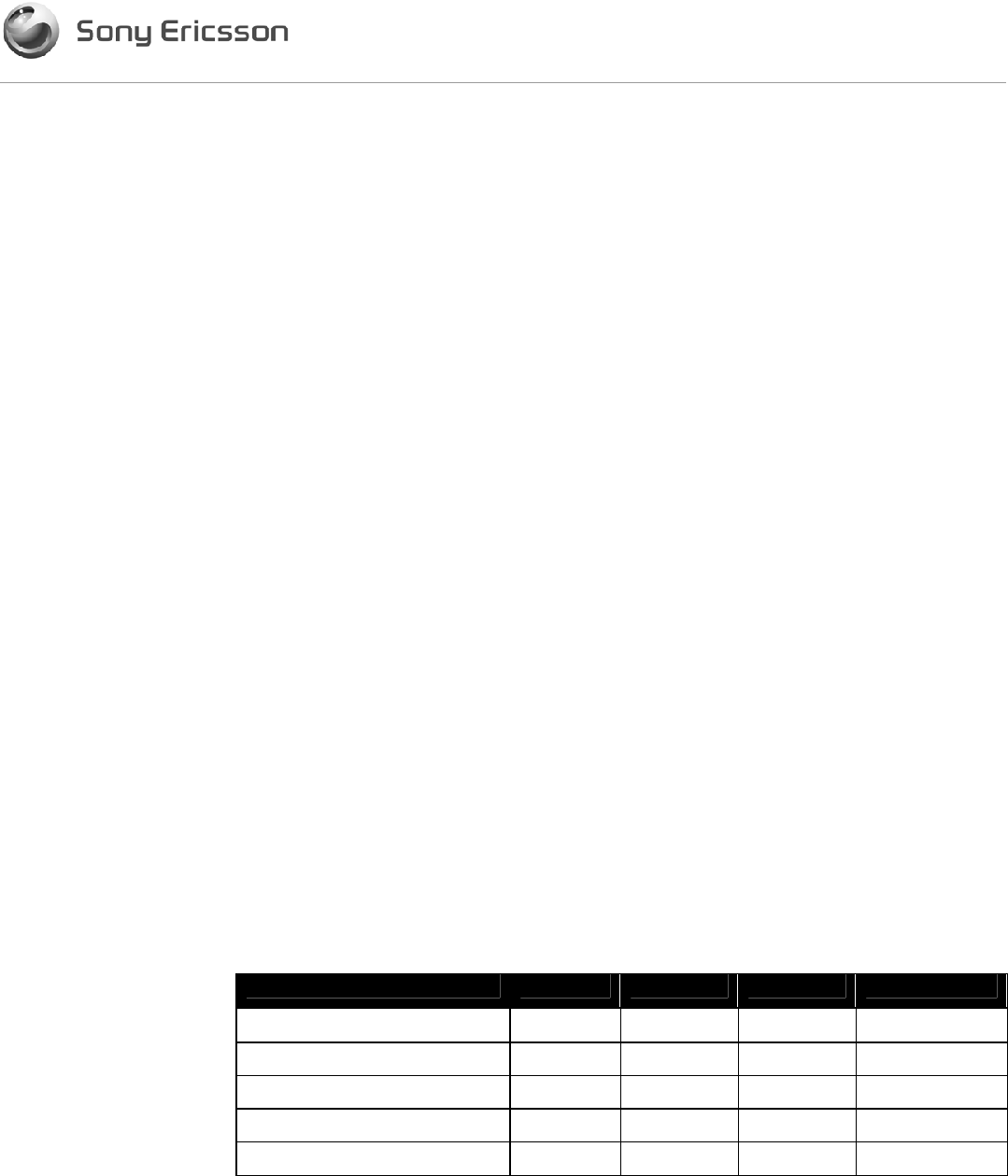
Confidential
USERS MANUAL 16(41)
Document number Revision
4/198 17-LXE 108 566 Uen PA6
2.4.2.1 Wakeup-Inrush Current
The wakeup inrush current occurs when the MODULE_PWR_EN_B signal transitions
from High to Low. The wakeup-inrush event occurs on the VCC_MAIN supply input and
not the VCC_AUX supply. The magnitude of the inrush is dependent on power supply
output impedance.
2.4.2.2 Contact-Inrush Current
The contact inrush current simulates application of power to the VCC_MAIN input lines
and measures the impact of the input impedance of the module.
While holding the MODULE_PWR_EN_B signal HIGH, a direct contact of VCC_MAIN
input pins to the output of the corresponding VCC_MAIN power supply is made and the
peak current measured. Similarly the contact inrush current of the VCC_AUX lines was
measured by making a direct contact of VCC_AUX pins to the output of the
corresponding VCC_AUX power supply.
2.4.2.3 Power Down Mode (Minimum DC Power Consumption)
In power down mode the module is placed in a low power consumption state under
control of the host application. In this mode, the unit consumes approximately 1 uA of
current as measured from the VCC_MAIN supply input and 1 uA of current as
measured from the VCC_AUX supply input. To activate this mode, the
Module_PWR_EN_B signal on pin 12 of the system connector is pulled to a logic level
1, which puts the module into the low power state. The module will stay in the low
power state until the Module_PWR_EN_B signal is driven low by an external open
collector transistor in the application circuitry. Turning the external open collector
transistor off will cause the Module_PWR_EN_B signal to float high and turn the module
off. The Module_PWR_EN_B line is tied to VCC_MAIN through a 220kpull-up
resistor so the sink current in the external open collector transistor is minimal.
2.4.3 VREF Signal Details
The following table defines the current sourcing capabilities and behavior of the VREF
signal.
Parameter Min Typical Max Units
Supply Voltage Reference 2.45 2.9 3.1 V
Output Current 1000 µA
Application Load 10 100 K
Rise Time 3300 µs
Fall Time 0.8 ms
Table 9: VREF Supply Details
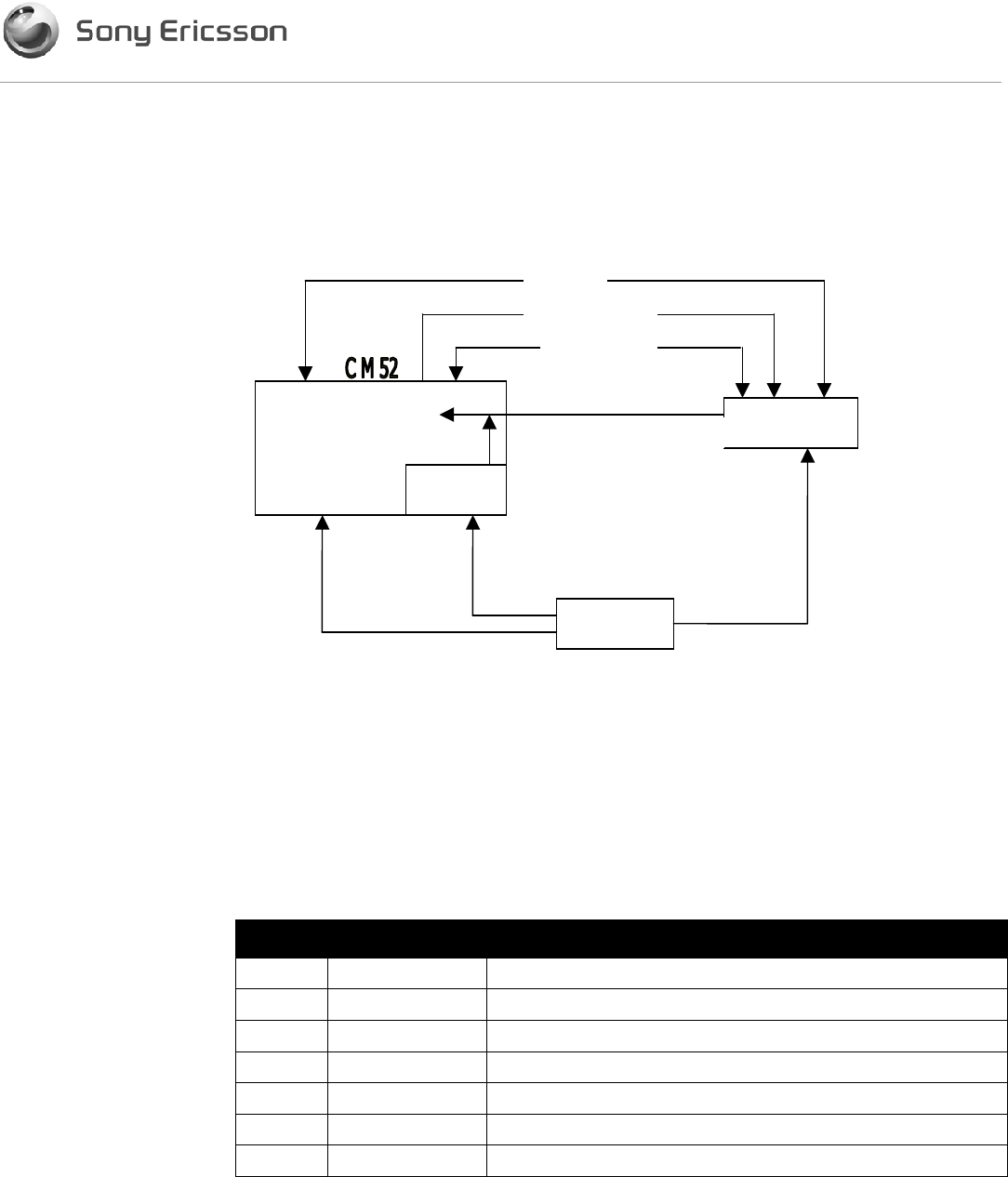
Confidential
USERS MANUAL 17(41)
Document number Revision
4/198 17-LXE 108 566 Uen PA6
2.5 Real Time Clock (RTC) Circuit
The purpose of this section is to detail the design of incorporating the Real Time Clock
feature into the CM52.
Figure 6: RTC Functional Block Diagram
2.6 Audio Interface
The audio-related signals are: the analog audio signals
•ATMS (Audio to Mobile Station),
•AFMS (Audio from Mobile Station),
•PCM (Pulse Code Modulation) signals (PCMULD,PCMDLD,PCMCLK, and
PCMSYNC).
Pin Signal Description
7AFMS Audio Output From Module.
10 ATMS Audio Input to Module.
9AGND Analog Reference
17 PCMCLK PCM Clock Output from module.
18 PCMSYNC PCM Frame Sync Output from module.
19 PCMULD PCM Voice Input to module
20 PCMDLD PCM Voice Output from module.
Table 10: CM52 Audio Signals
Radio
RTC
(HH:
MM)
Application
Battery
Module_PWR_EN_B
HW_SHDN
UART
Ring Indicator
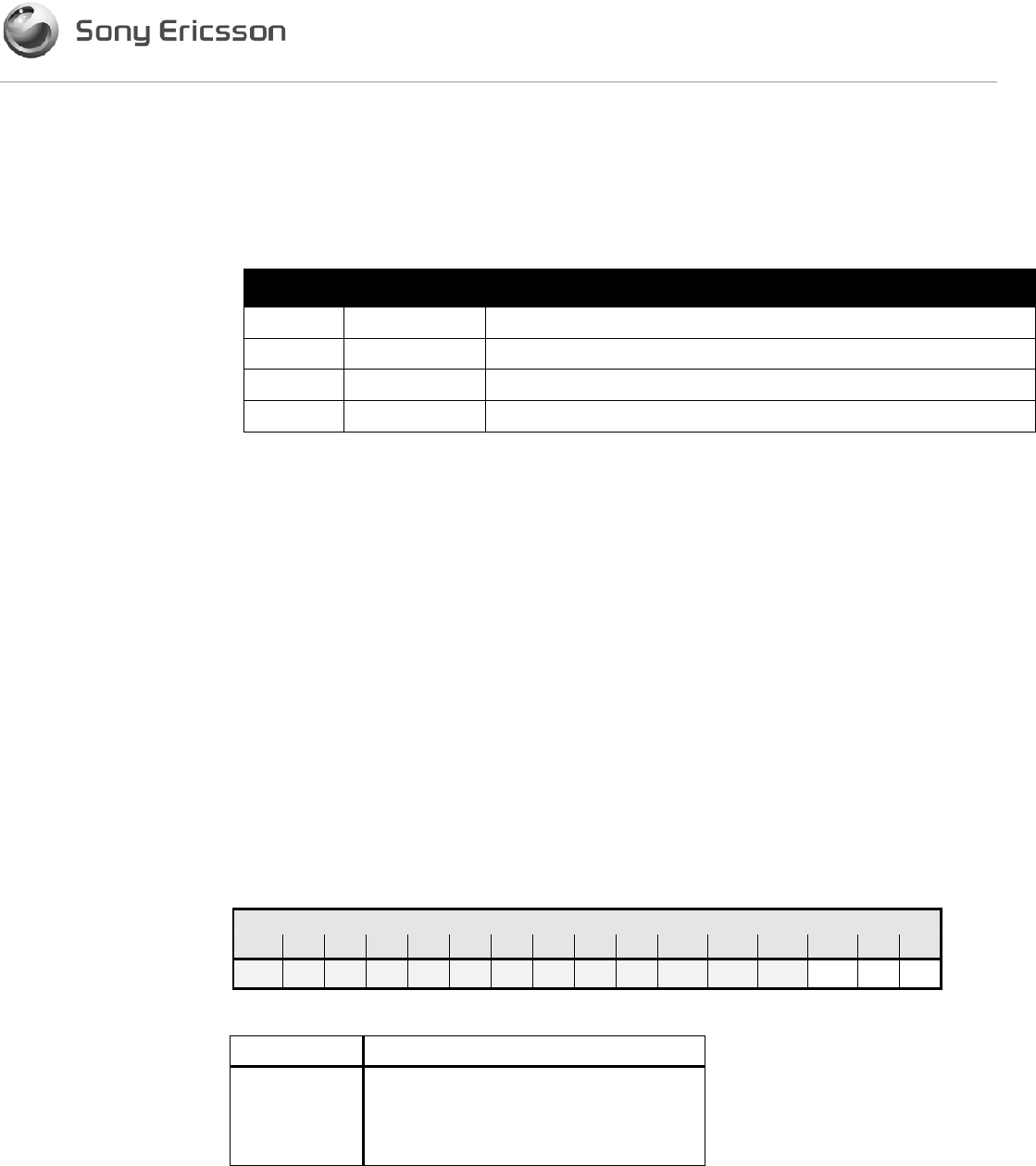
Confidential
USERS MANUAL 18(41)
Document number Revision
4/198 17-LXE 108 566 Uen PA6
2.6.1 Digital Audio
The CM52 provides digital audio capability over the system connector. The digital audio
signals enable the connection of a digital audio source. The receiver is bypassing the
analog audio processing functions performed within the module. The digital audio
interface includes the following PCM signals:
Pin CM52 Description
17 PCMCLK PCM Clock Output from module.
18 PCMSYNC PCM Frame Sync from module
19 PCMULD PCM Voice Input to module.
20 PCMDLD PCM Voice Output from module.
Table 11: CM52 Digital Audio Signals
Already defined CMOS output/input electrical characteristics apply (see Section 2.3.3).
The PCM format (for PCMULD and PCMDLD) follows a linear PCM data format with
13-bit data embedded in a 16-bit word. The data bits in PCMULD (input) and PCMDLD
(output) are aligned so that the MSB in each word occurs on the same clock edge. See
timing diagram in 2.6.1.2.
2.6.1.1 Data Format
The CM-52 module implements a 13-bit PCM with the 13-bit data embedded in a 16-bit
word as follows.
Each PCM word shall contain 16-bits D15 – D00. D15 – D03 is the 2´s-complement
value of the 13-bit PCM, with D15 as the sign bit. D15 is the MSB while D03 is the LSB.
Note that the MSB is sent in first place. Ensure that the read data from PCMDLD is right
shifted three times and sign extended before being used
13-bit linear
15 14 13 12 11 10 9 8 7 6 5 4 3 2 1 0
MSB LSB x x x
Bit Contents
D15 –
D03 Two complement of the 13-bit PCM.
D02 –
D00 Bits are undefined.
2.6.1.2 Timing
Timing shall be according to the following diagram (see Figure 7: PCM Timing
Diagram). The signals in the diagram shall be interpreted according to the following
relation.
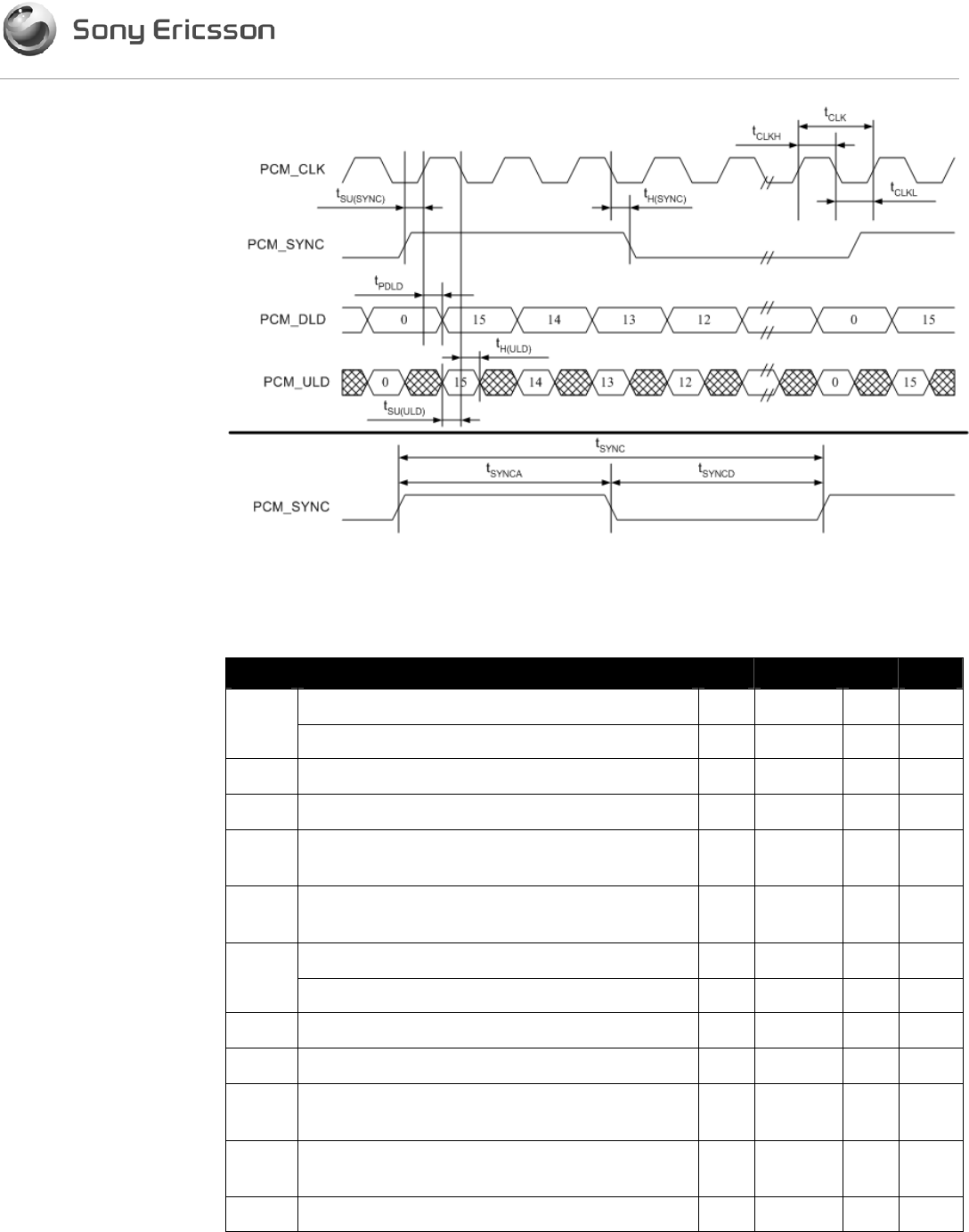
Confidential
USERS MANUAL 19(41)
Document number Revision
4/198 17-LXE 108 566 Uen PA6
Figure 7: PCM Timing Diagram
The meaning and value of the timing parameters are described in Table 12.
Name Description Min Typical Max Unit
PCM_SYNC cycle time. 125 µs
tSYNC PCM_SYNC frequency 8.0 kHz
tSYNCA PCM_SYNC asserted time. 62.4 62.5 µs
tSYNCD PCM_SYNC de-asserted time. 62.4 62.5 µs
tSU(SYN
C) PCM_SYNC setup time to PCM_CLK rising. 1.95 µs
tH(SYNC) PCM_SYNC hold time after PCM_CLK
falling. 1.95 µs
PCM_CLK cycle time. 7.8 µs
tCLK PCM_CLK frequency 128 kHz
tCLKH PCM_CLK high time. 3.8 3.9 µs
tCLKL PCM_CLK low time. 3.8 3.9 µs
tPDLD Propagation delay from PCM_CLK rising to
PCM_DLD valid. 50 ns
TSU(ULD
)PCM_ULD setup time to PCM_CLK falling. 70 ns
TH(ULD) PCM_ULD hold time after PCM_CLK falling. 20 ns
Table 12: PCM Timing Parameters
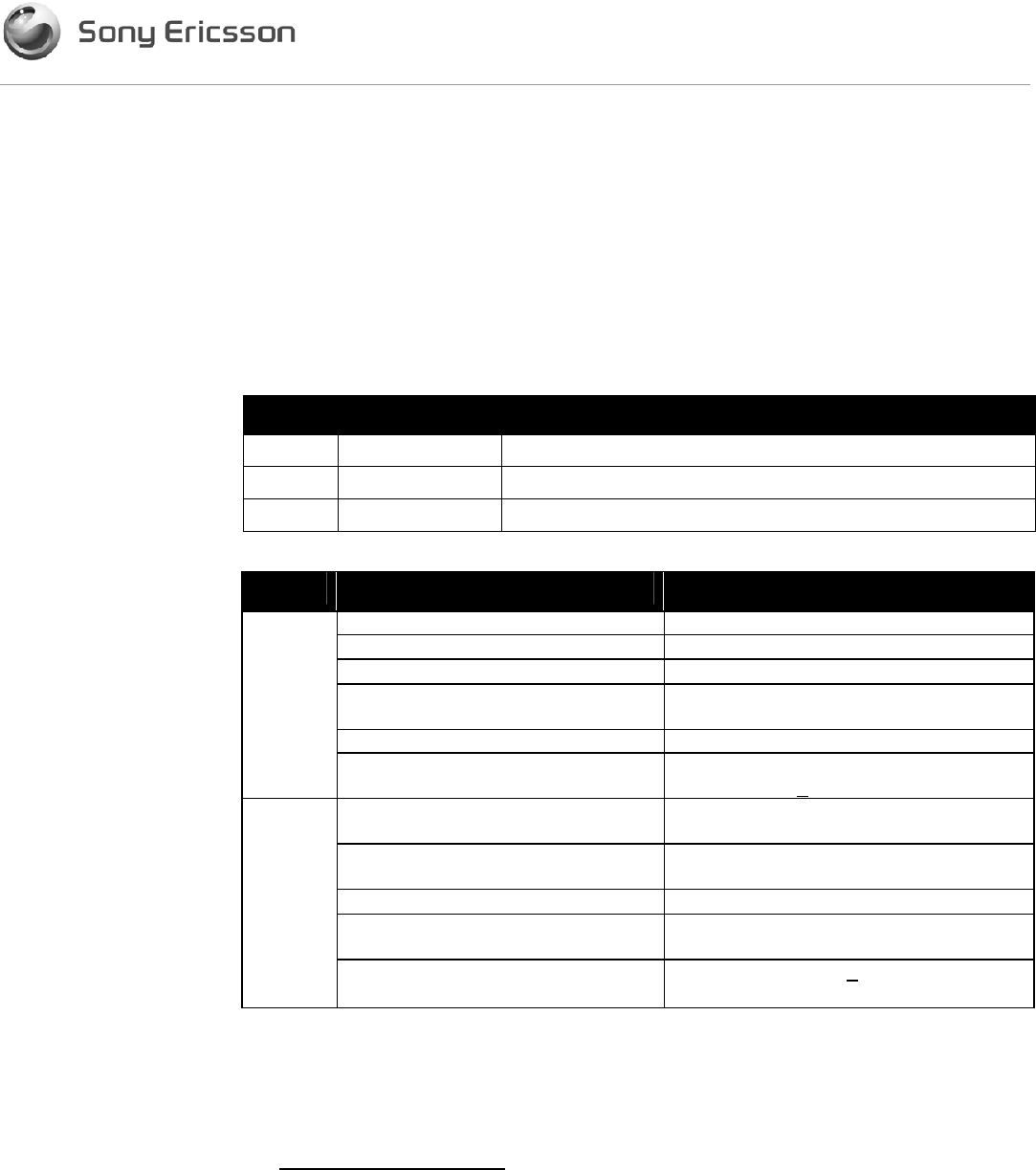
Confidential
USERS MANUAL 20(41)
Document number Revision
4/198 17-LXE 108 566 Uen PA6
2.6.2 Analog Audio
ATMS is the analog audio input to the module. When it is active, it is connected to the
radio via the audio processing stages in the module.
The AFMS is the analog audio output from the module. When it is active it is connected
to the radio via the audio processing stages in the module.
The AGND is the analog reference signal. ATMS and AFMS are referenced to this
signal, which is connected to GND in one place inside the module.
Pin Signal Description
7AFMS Audio Output From Module
10 ATMS Audio Input To Module
9AGND Analog Reference
Table 13: CM52 Analog Audio Signals
Signal Parameter
Module audio output 300 – 3400 Hz
Output Impedance Rout 100
Drive capacity into 10 k3.77 VP-P max. or 2.5 dBV
External Device audio input
impedance Zin 10 k
Volume control -81 dB from maximum > - 81 dB (mute)
AFMS
Sensitivity 1004 Hz tone at 8kHz deviation
generates 900+100 mVrms.
Sources are preferably AC
coupled. Cout 2.2uF
External Device audio source
Output resistance Rout 1.0 k
Module audio input impedance Zin 10 k
Levels from external audio
source (maximum) 3.77 VP-P max. or 2.5 dBV
ATMS
Sensitivity 1004 Hz tone at 900+100 mVrms
generates 8kHz deviation.
Table 14: Audio Characteristics
Analog Reference (AGND)
•The AGND lead is the analog audio reference ground. It is the return signal for
Audio To Mobile Station (ATMS), Audio From Mobile Station (AFMS).
•Electrical characteristics: Imax < 40 mA (peak)
•The AGND is connected to the chassis Ground (GND) in the CM52 module, and
only there. The application should be connected to GND and only use AGND as
reference for the audio lines ATMS and AFMS.
•The PCM signals are referenced to digital ground.
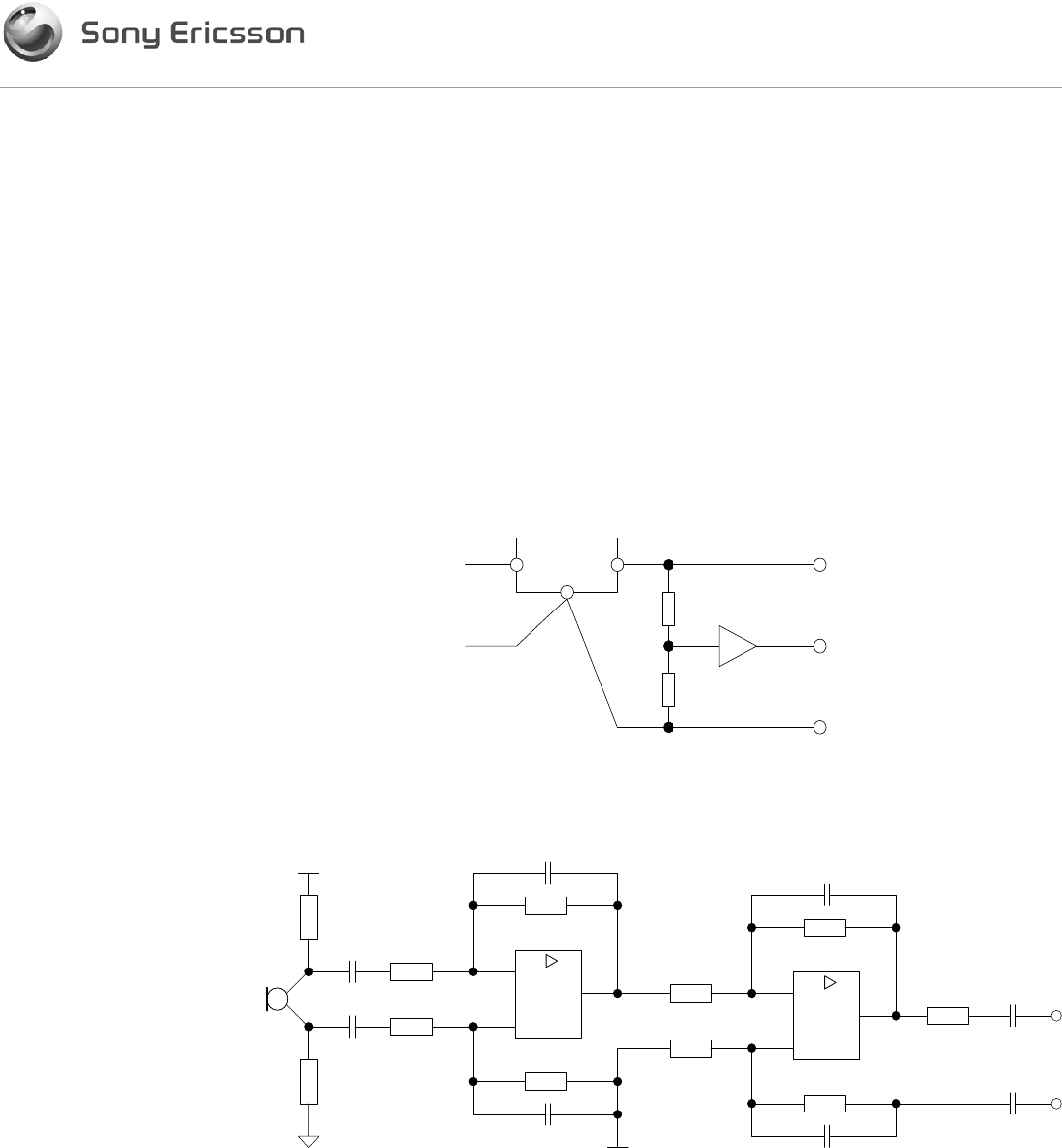
Confidential
USERS MANUAL 21(41)
Document number Revision
4/198 17-LXE 108 566 Uen PA6
Application Implementation:
BIAS:An analog ground plane should be generated, which connects to GND in one
point so that high frequency digital current is not floating through the analog ground.
Connecting the analog ground in only one point also avoids ground currents from power
supplies and other high current circuitry from creating noise in the analog circuitry. The
voltage supply for the analog circuitry should connect its ground pin as close as
possible to the point where the analog ground connects to GND. The BIAS reference is
generated from this supply voltage and analog ground, and shall be used as a
reference for all analog circuitry in the application. Note that Analog Ground and AGND
are two different signals. Analog Ground is the ground plane used by the application. It
should be connected to the application’s GND in one point preferably at the regulator
that generates the analog supply voltage. AGND is the analog audio reference
received from the phone. This is a signal with the intent to be used together with ATMS
and AFMS as a semi differential interface between the module and the application.
Regulator
VIN
GND
R
R
VCC
BIAS
Analog Ground
ATMS:An application using the analog audio interface must re-reference the signal
from its own internal BIAS to AGND. The figure below shows an example of a
microphone implementation.
0
-
+
0
VCC
0
-
+
0
<=1k
BIAS
>=2.2uF ATMS
AGND
>=2.2uF
+
+
The microphone should preferably be connected to its pre-amplifier differentially, which
will minimize noise pickup from possible ground current.
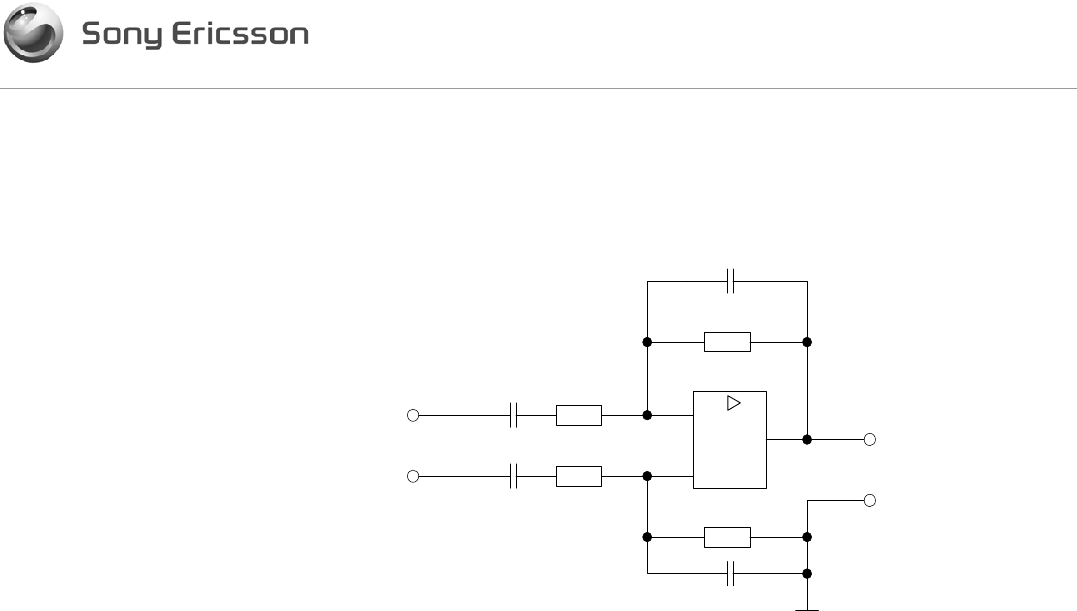
Confidential
USERS MANUAL 22(41)
Document number Revision
4/198 17-LXE 108 566 Uen PA6
AFMS:An application using the analog audio interface must re-reference the AFMS-
signal from AGND to its own internal BIAS. The figure shows a differential
implementation. C1 is chosen to create the correct HP frequency response. R1 and R2
determine the gain, and C2 and R2 determine the LP frequency response.
0
-
+
0
R1
>=10k
R1
>=10k
R2
R2
C1
C1
C2
C2 BIAS
AFMS
AGND
Internal App +
Internal App -
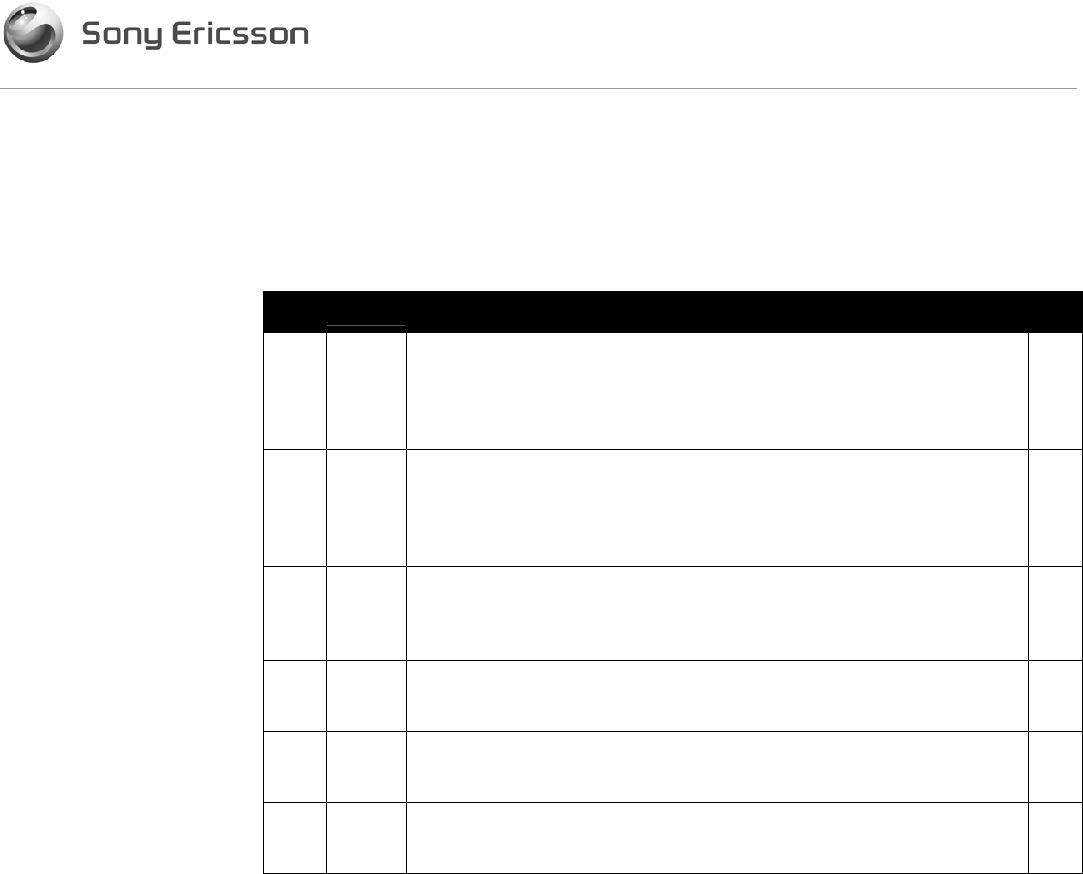
Confidential
USERS MANUAL 23(41)
Document number Revision
4/198 17-LXE 108 566 Uen PA6
2.7 Serial Data Interface
The serial channels are used as asynchronous communication links between the
application system and the module. The following table shows the serial data channels
related signals:
Pin Signal Description Dir
23 DCD Data Carrier Detect
This signal is set default high. It goes low indicating that a data call
is established (CONNECT received from the remote modem). The
signal goes high when the data connection is disconnected.
O
25 CTS Clear ToSend
This signal is initially set high, indicating that the module is not ready
to receive data. It is set low after the module is done performing its
startup procedure indicating that it is ready to receive data.
O
26 DTR Data Terminal Ready
This signal should be set low by the application during a data call. A
low to high transition will terminate the data call.
I
27 TD Transmit Serial Data To Module (DTMS)
The application shall set this signal high at startup.
I
28 RTS Request ToSend
The application shall set this pin low when it is ready to receive data.
I
30 RD Receive Serial Data From Module (DFMS)
The module will set this signal high at startup.
O
Table 15: Serial Data Channels
The common CMOS electrical specifications defined in Section 2.3.3 are valid for all
these signals. The standard character format is 1 start bit, 8 data bits, non-parity and 1
stop bit. In all, there are 10 bits per character.
Note! The signal levels do not match the standard RS-232 (V.28). If the application
signal levels are not compatible with the CMOS levels described in Table 3: CMOS
Output / Input Electrical Characteristics, then electrical protection level limiters or
level conversion hardware will be necessary between the CM-52 module and the
application.
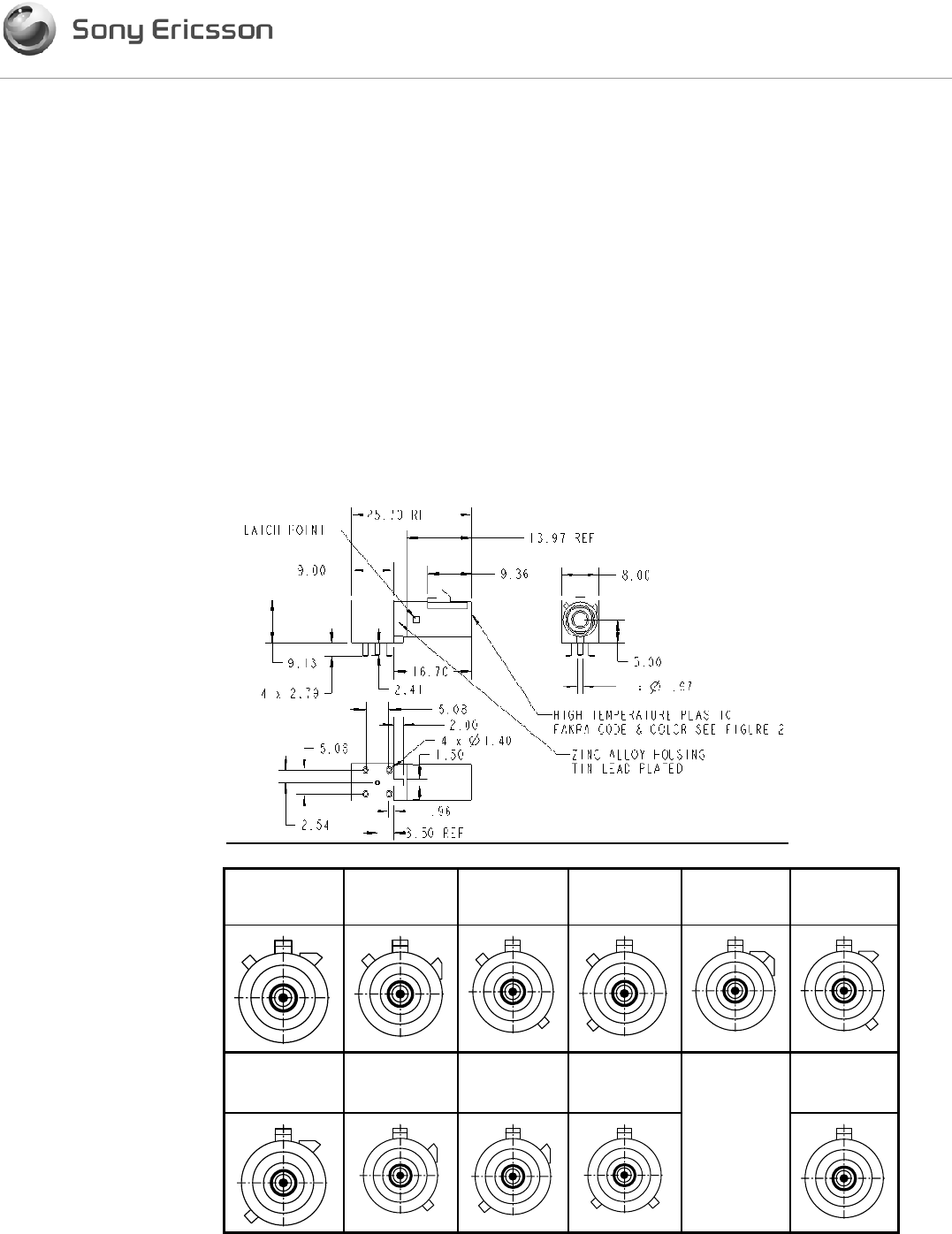
Confidential
USERS MANUAL 24(41)
Document number Revision
4/198 17-LXE 108 566 Uen PA6
2.8 Antenna Interface
The antenna interface of the CM52 consists of a single or dual RF connector for the
radio with optional antenna diagnostics, and a single RF connector for the optional GPS
function.
2.8.1 Antenna Connector
A variety of antenna connectors are available for the CM-52 module including SMA,
SMB, MCX, and BNC. A standard 5-pin, thru-hole pattern has been selected because
of the wide variety of compatible connectors available and also for the maximum
mechanical strength.
For automotive applications, a FAKRA-type connector is available which provides a
double locking mechanism as well as a keyed, color-coded interface as shown below:
A
Black
B
Natural
C
Blue
D
Violet
E
Green
F
Brown
G
Gray
H
Violet
I
Beige K
Curry
Z
Waterblue
Figure 8: Color and Keying for various FAKRA connectors
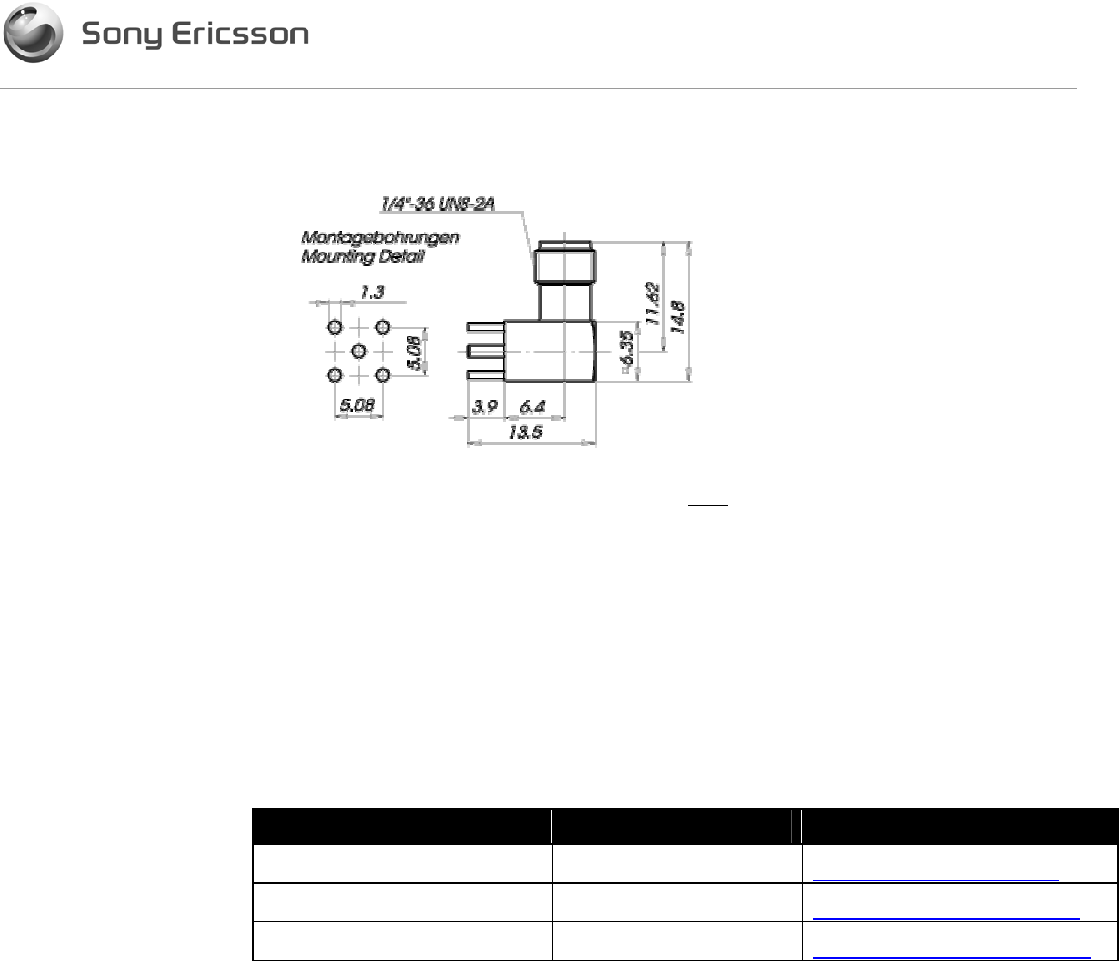
Confidential
USERS MANUAL 25(41)
Document number Revision
4/198 17-LXE 108 566 Uen PA6
The physical dimensions of a sample SMA connector and mounting hole are shown in
the drawing below.
Electrical performance parameters are valid only when the terminating impedance at
the output of the antenna connector exhibits a VSWR of less than 2:1 for all phase
angles in the frequency band of operation. High VSWR loads at the antenna connector
adversely affect current consumption, linearity, and power efficiency of the module and
may degrade operation; however, internal protection circuitry has been added to the
design to prevent damage.
The performance of the module as defined in Section 2.8.2 of this manual is referenced
to the antenna connector. The antenna connectors must not negatively affect the
performance of the CM52. For this reason, all options are discrete connectors and thus
do not include cable assemblies.
The table below lists several suppliers of antenna connectors that are available.
Description Vendor / Part # Additional Information
RF Connectors and cabling ITT Cannon / Various http://www.ittcannon.com
RF Connectors and cabling Amphenol RF / Various http://www.amphenolrf.com
RF Connectors and cabling Hirschmann / Various http://portal.hirschmann.com
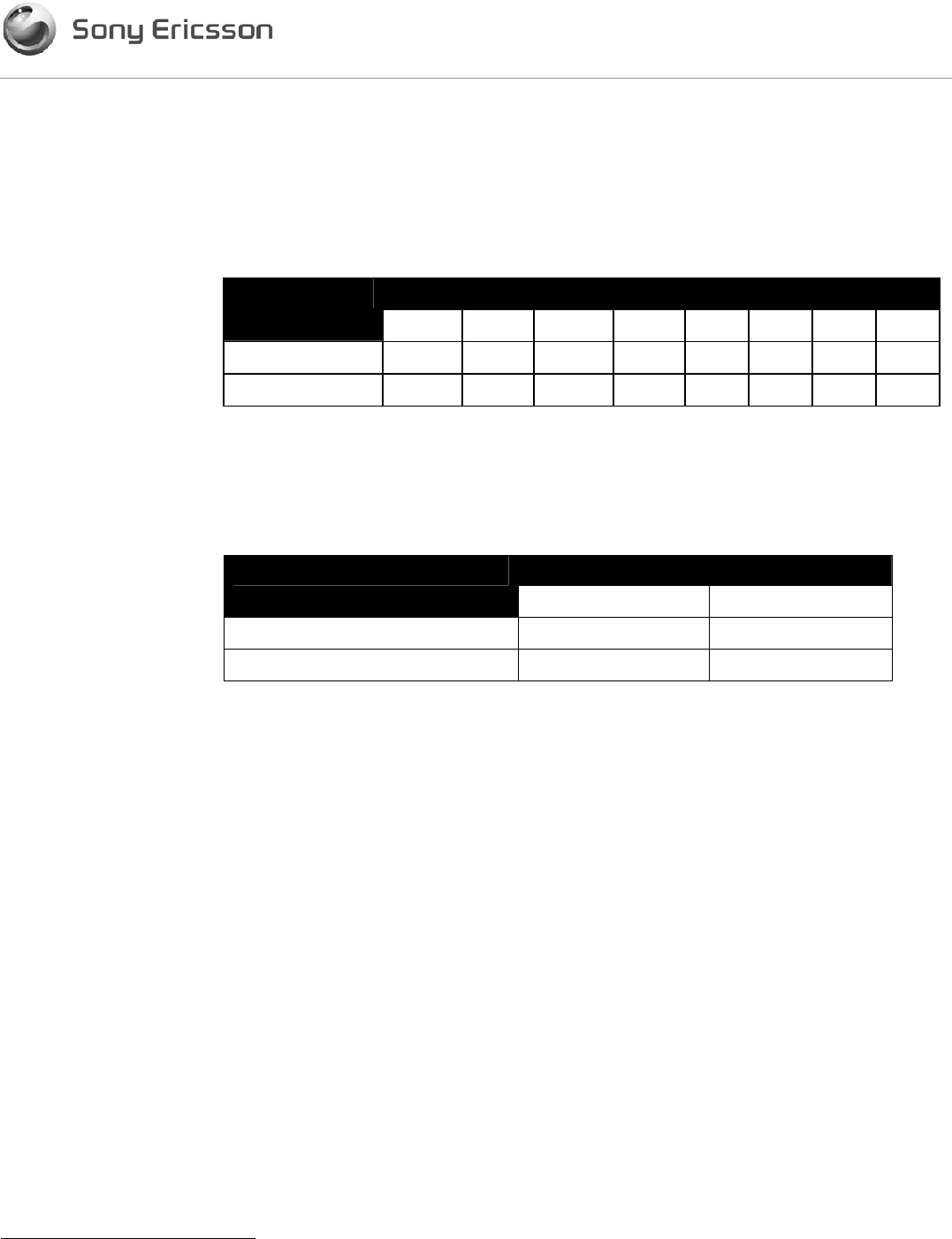
Confidential
USERS MANUAL 26(41)
Document number Revision
4/198 17-LXE 108 566 Uen PA6
2.8.2 RF Output Power
The CM52 is able to operate in several modes and different output power level.
Applications may require output power levels similar to those in a handheld cellular
phone or higher levels commonly required in rural areas. The following tables show the
nominal power provided by the CM52.
Mobile Station Power Level (dBm)
0 1 2 3 4 5 6 7
Class I, AMPS 34.8 31 26.3 24 20 16 12 8
Class III, AMPS 26.3 26.3 26.3 24 20 16 12 8
Table 16: Mobile Station Nominal Analog Power Levels
Note: These numbers represent the Nominal Output Power4in AMPS mode and are
referenced to the antenna connector. Analog output power levels are as defined for a
Power Class I device in Industry Specification EIA/TIA IS-91.
Mobile Station Power Level (dBm)
Lower Limit Upper Limit
Class III, CDMA Band Class 0 23 dBm (0.2 Watts) 30 dBm (1.0 Watts)
Class II, CDMA Band Class 1 23 dBm (0.2 Watts) 30 dBm (1.0 Watts)
Table 17: Mobile Station CDMA Maximum Output Power
2.8.3 Carrier Approval
The CM52 will undergo carrier qualification. Approval of the CM52 is sought referenced
to the antenna connector. Any applications intending to use the CM52 will likely be
required to undergo similar testing with the CM52 integrated into the application. For
this reason it is strongly recommended that the application is designed to accommodate
exposing the antenna connector(s) of the CM52. This will help insure that the
qualification of the application with the carrier will be successful.
2.8.4 Antenna Diagnostics
The antenna diagnostics function consists of one antenna detection circuit per RF
connector. Each detection circuit can support antenna resistance (RL) values of 1 K
to 20 Kand 49.9 K. Internal resistance (R) value is either 10 Kor 49.9 K, as
required by the customer’s application.
AT commands are provided to query the status, query the limits and set the limits for
the status: GOOD, OPEN, or SHORTED. These commands are detailed in the CM52
Software User’s Guide and AT Command.
The drawing below is a high level description of the antenna diagnostics circuit.
4PL0 and PL1 require VCC_AUX = 13.8V
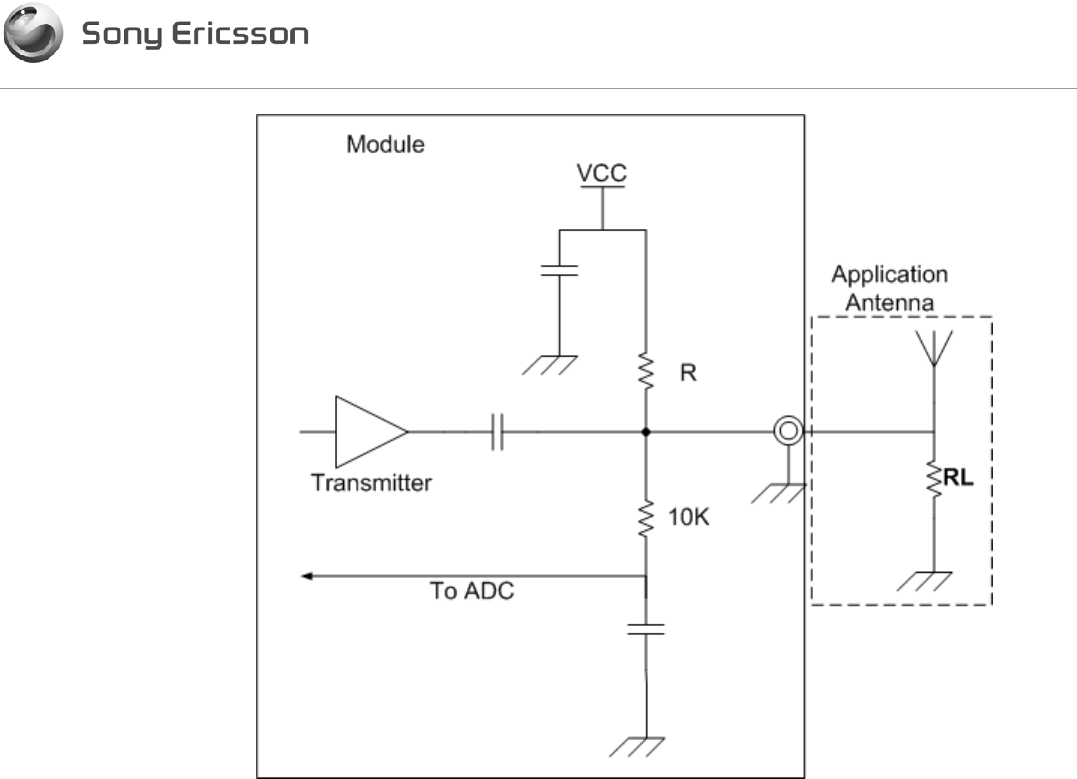
Confidential
USERS MANUAL 27(41)
Document number Revision
4/198 17-LXE 108 566 Uen PA6
Figure 9: Antenna Diagnostic Circuit
The current antenna status is based on a comparison between the voltage measured at
the antenna connector and the limits set by the application for OPEN and SHORTED.
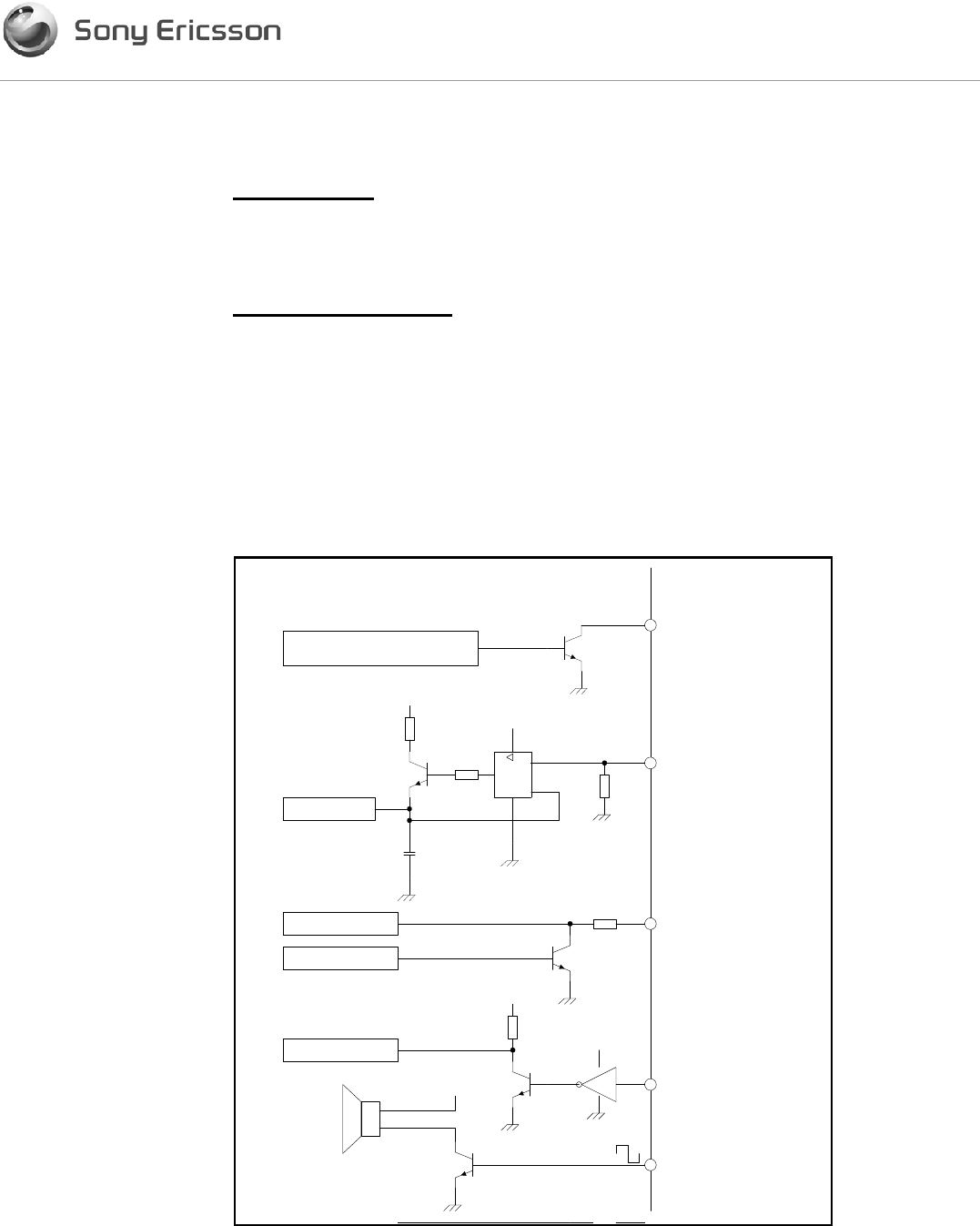
Confidential
USERS MANUAL 28(41)
Document number Revision
4/198 17-LXE 108 566 Uen PA6
3 Recommended Circuitry
Abbreviations:
•VCC - Represents the logic supply voltage used by the application.
•VREF - Current amplified reference voltage used as supply voltage for all logic
interface circuitry.
Component proposals:
•Transistors not showing a base resistor should be interpreted as a BRT (Built in
Resistor Transistor) i.e. Toshiba RN1308.
•The inverting buffers should preferably be Schmitt-Triggered, i.e. Toshiba TC7S14
or similar.
3.1 Status Group Recommended Circuitry
The status group contains four signals, one output signal from the application and three
input signals to the application.
Phone ModuleApplication
12, MODULE_PWR_EN_B
0 = Phone Module Power OFF
1 = Phone Module Power ON
+
-
0
0 - 1k
0 -10 ohm
5V
2, VREF
1M
10uF
VREF
5V
VREF
40, RI
1 - 100k
VCC
Ring Indicator
24, RINGER
VCC
15, HW_SD
100
Shutdown Request
Shutdown Indicate
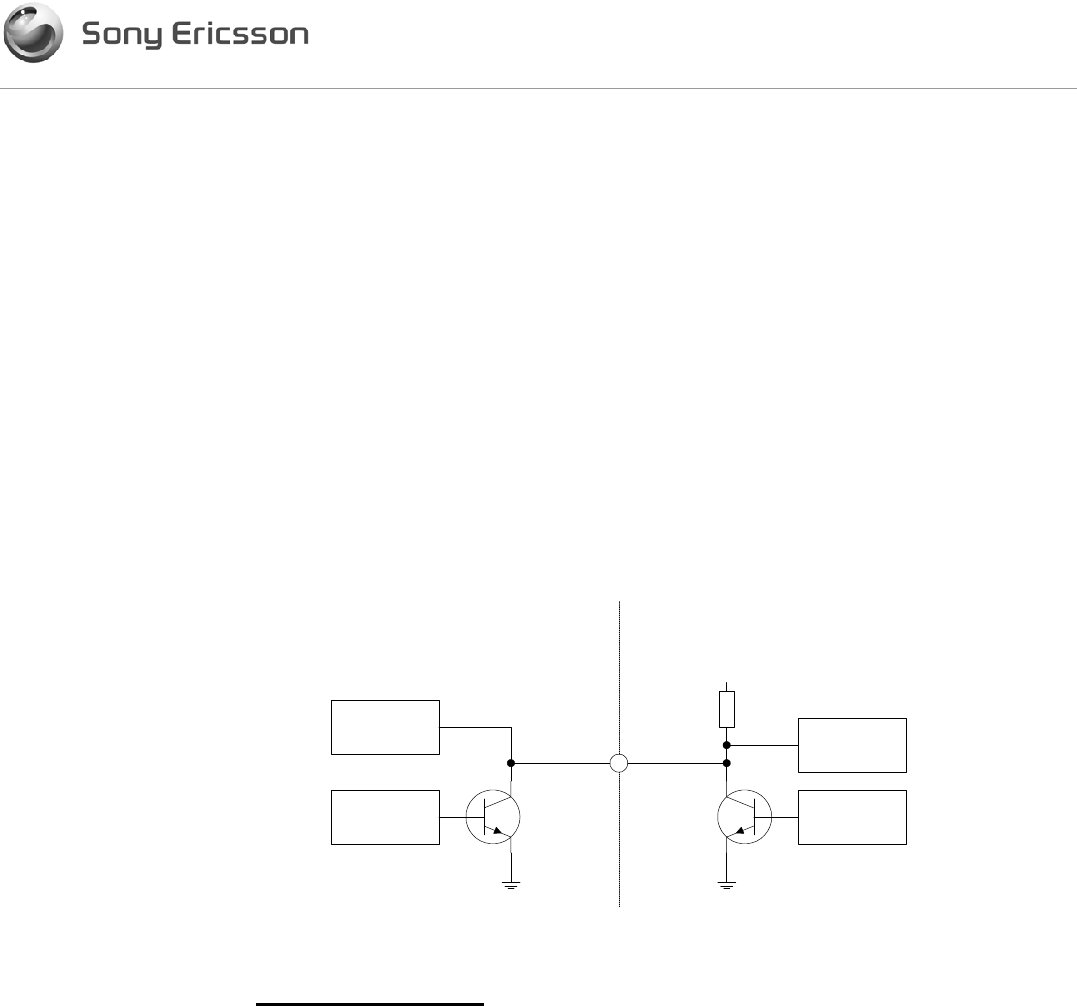
Confidential
USERS MANUAL 29(41)
Document number Revision
4/198 17-LXE 108 566 Uen PA6
3.1.1 MODULE_PWR_EN_B
This signal, located on pin 12 in the system connector, enables the main 5V supply in
the phone module so that it powers on. This is an open collector input to the phone
module. Its reference voltage is the main 5V supply.
3.1.2 VREF
This signal, located on pin 2 in the system connector, provides the application with its
logic supply voltage. The application can current-amplify this signal and use it to supply
its interface circuits.
3.1.3 HW_SD
This signal, located on pin 15 in the system connector, provides the ability of performing
a hardware shutdown of the module. It is a bi-directional signal that is pulled up inside
the phone module.
Shut down sequence:
1 To request a shutdown of the phone module, the application should provide an
active low pulse of 100 ± 25 ms on the HW_SD pin through an open collector
output.
2 This pulse is detected by the module, which confirms the request by enabling its
HW_SD output, setting it active low.
3 The application waits for the HW_SD pin to become inactive high.
4 The module has performed its power down sequence and disables its output
resulting in HW_SD becoming inactive high.
5 The application shuts down, disabling MODULE_PWR_EN_B.
Shutdown
Indicate
Shutdown
Request Shutdown
Confirm
Shutdown
Detect
VREF
15, HW_SD
Application Phone Module
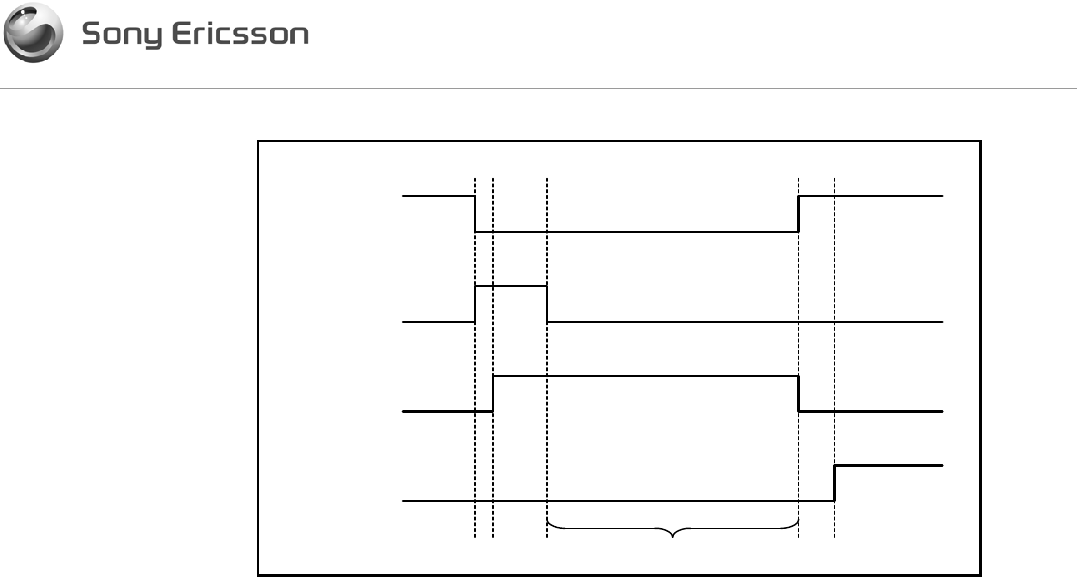
Confidential
USERS MANUAL 30(41)
Document number Revision
4/198 17-LXE 108 566 Uen PA6
3.2 Data Group Recommended Circuitry
The data group contains six signals, three output signals from application, two input
signals to application, and one I/O signal.
HW_SD
Shutdown
Request
Shutdown
Confirm
1423
MODULE_
PWR_EN_B
5
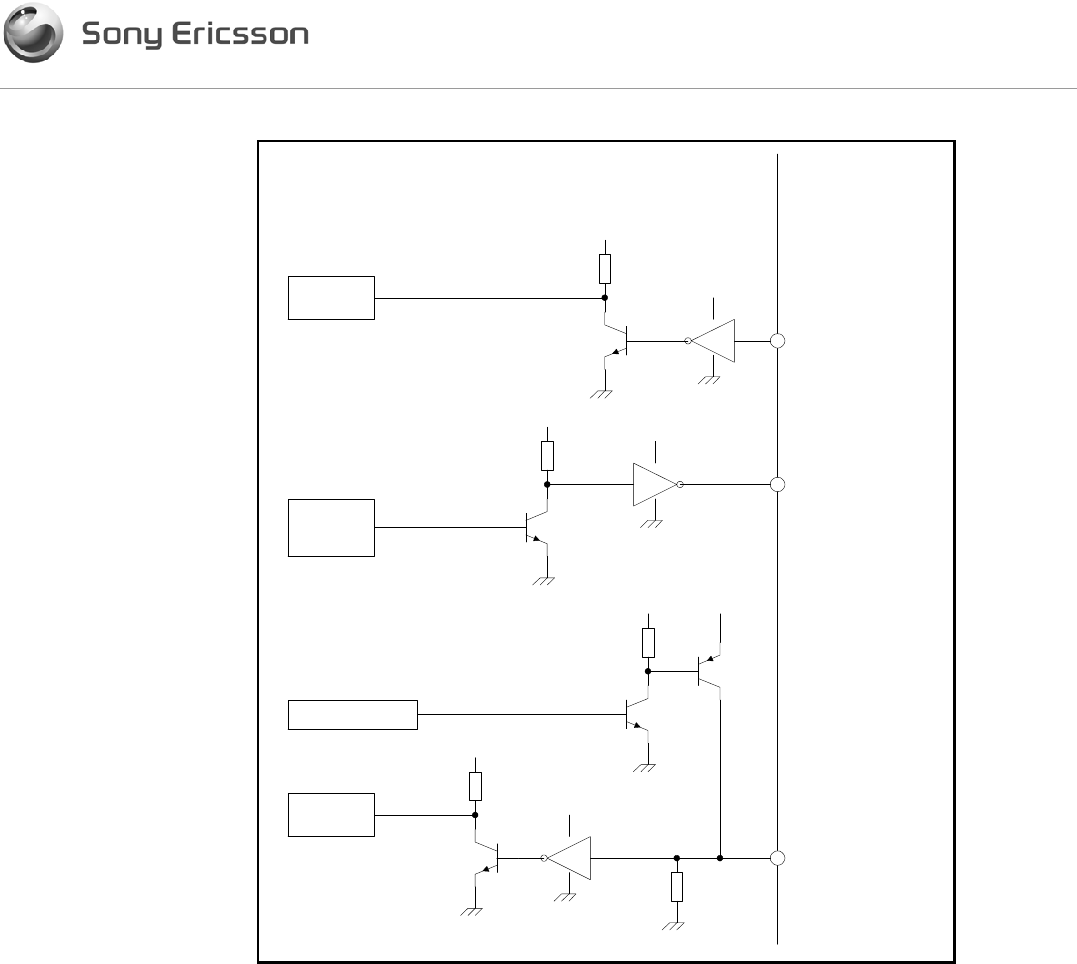
Confidential
USERS MANUAL 31(41)
Document number Revision
4/198 17-LXE 108 566 Uen PA6
3.2.1 VPPFLASH/DCD
This signal, located on pin 23 in the system connector, can be used by the application
to enable flashing of the phone module. To enter flash-mode, the application shall set
VPPFLASH_EN active high, then enable the MODULE_PWR_EN_B pin.
VREF
30, RD (DFMS)
25, CTS
1 - 100k
VCC
RxD
CTS
Phone Module
Application
VREF
27, TD (DTMS)
28, RTS
26, DTR
1 - 100k
VREF
TxD
RTS
DTR
VREF
23, VPPFLASH/DCD
1 - 100k
VCC
DCD
100k
VREF
VPPFLASH_EN
1 - 100k
VREF
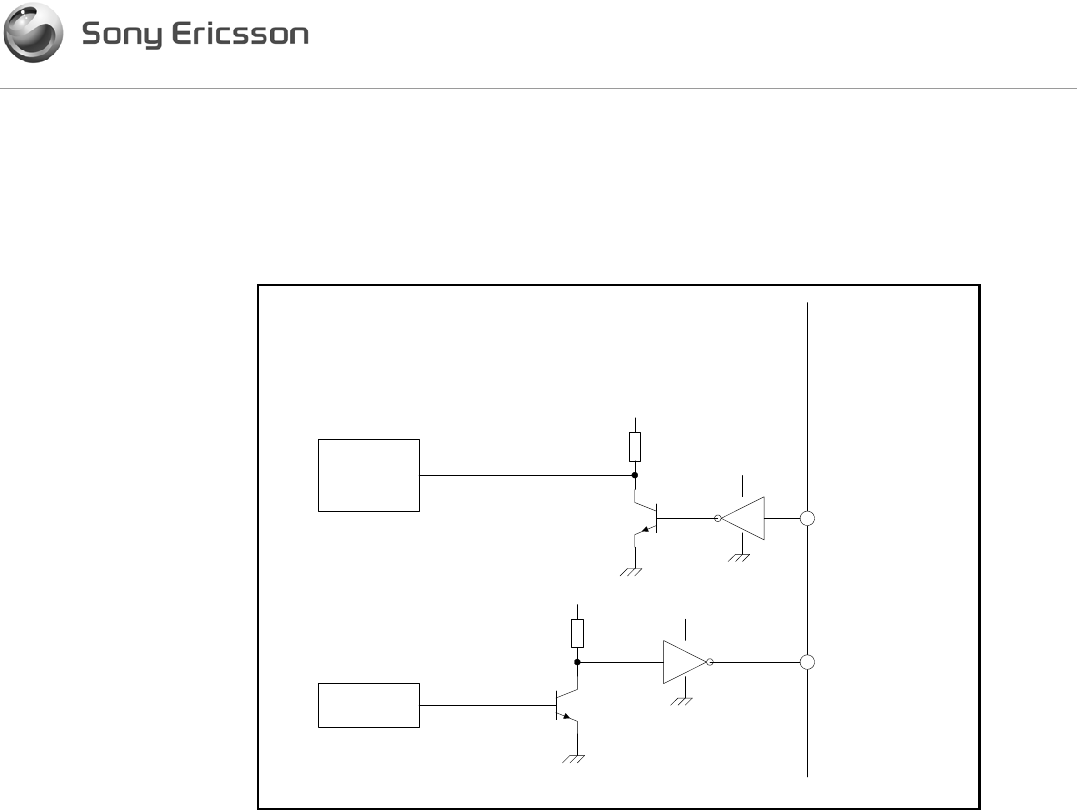
Confidential
USERS MANUAL 32(41)
Document number Revision
4/198 17-LXE 108 566 Uen PA6
3.3 PCM Group Recommended Circuitry
The PCM group contains four signals, three input signals to the application, and one
output signal from the application.
VREF
19, PCMULD
18, PCMSYNC
17, PCMCLK
1 - 100k
VCC
PCM_IN
PCM_SYNC
PCM_CLK
VREF
20, PCMDLD
1 - 100k
VREF
PCM_OUT
Phone ModuleApplication
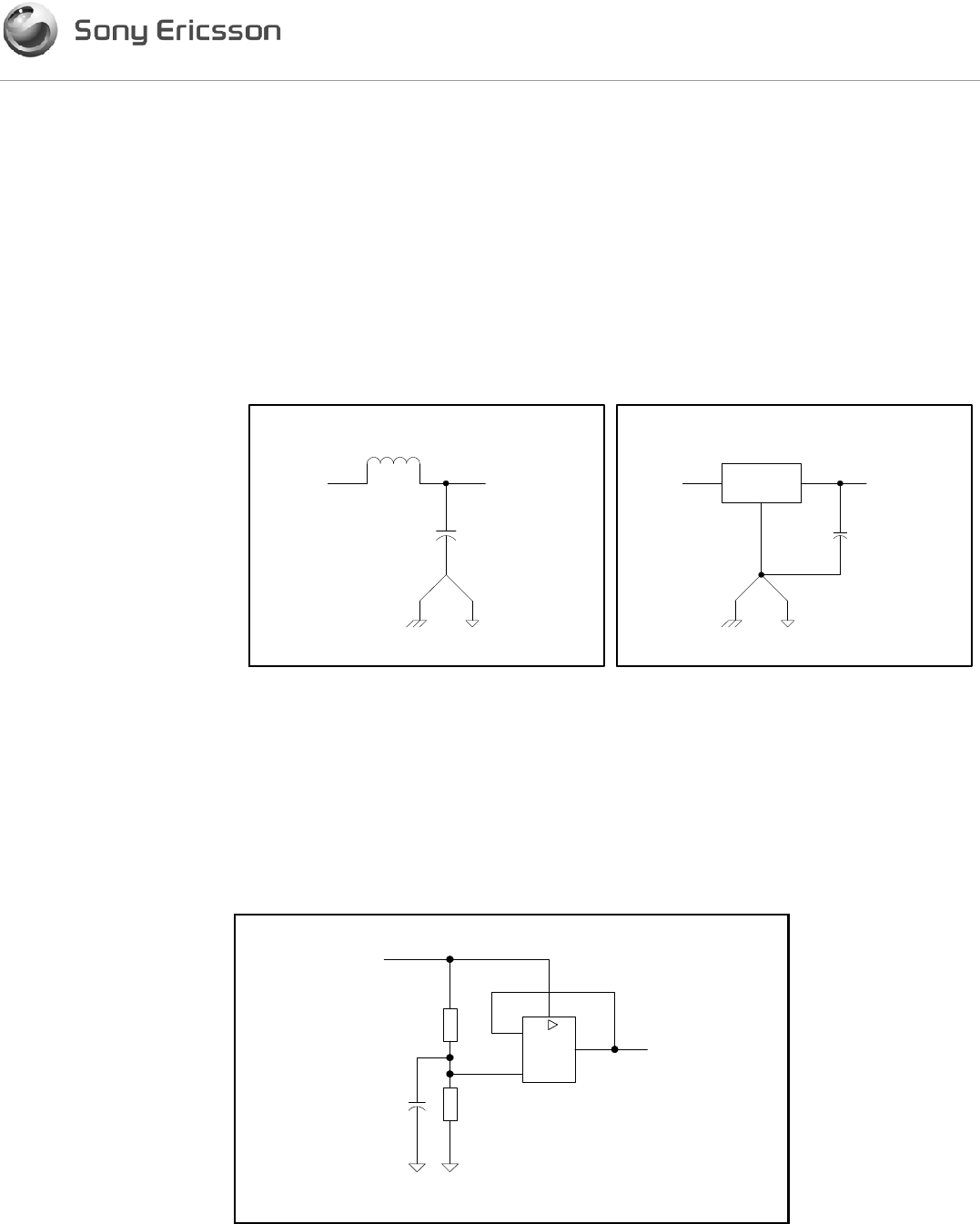
Confidential
USERS MANUAL 33(41)
Document number Revision
4/198 17-LXE 108 566 Uen PA6
3.4 Analog Audio Group Recommended Circuitry
3.4.1 Creating an analog ground
An analog ground plane should be generated, which connects to GND in one point so
that high frequency digital current is not floating through the analog ground. Connecting
the analog ground in only one point avoids ground currents from power supplies and
other high current circuitry from creating noise in the analog circuitry. This common
point should be located where the analog supply voltage (VANA) is generated (at filter
(A), or regulator (B) depending on implementation).
3.4.2 Creating an analog reference voltage (BIAS)
The BIAS reference should be generated from the analog supply voltage (VANA) and
be referenced to the analog ground. This reference shall be used to bias all analog
circuitry in the application.
5V VANA
12V
VANA
Regulator
BA
-
+
0
100k
100k
VANA
BIAS
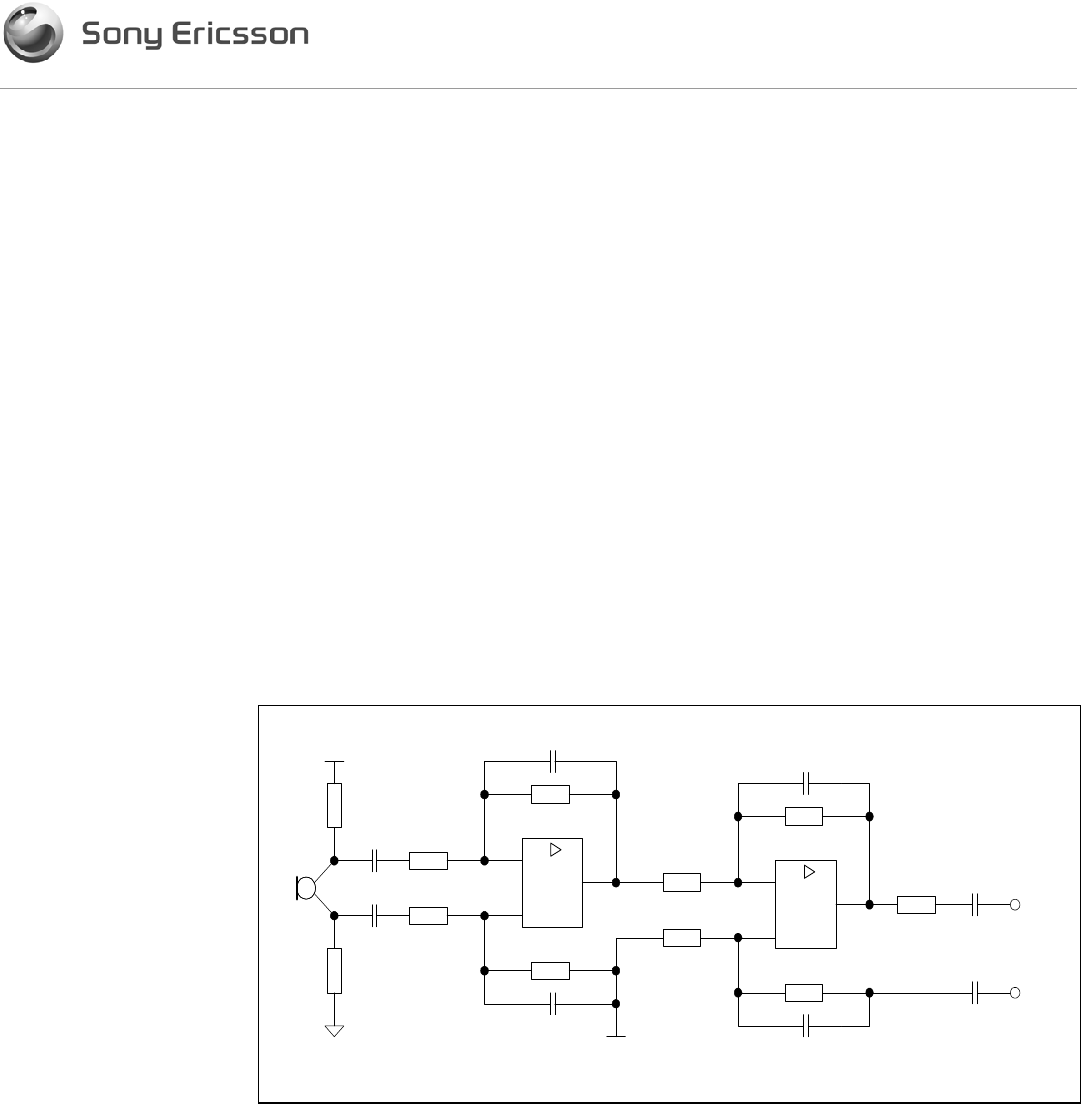
Confidential
USERS MANUAL 34(41)
Document number Revision
4/198 17-LXE 108 566 Uen PA6
The bias can be tapped directly from the resistor voltage divider, but the amplifier will
make the bias more stable and less susceptible to noise.
3.4.3 Analog ground vs. AGND
The AGND signal output from the module is not a ground. It is an analog reference,
which is connected to the main ground used by the module in one place inside the
module. It should not under any circumstances be used as a ground or connected to a
ground in the application.
AGND must be treated as a signal. Together with ATMS and AFMS it creates a semi
differential interface. The analog ground shall be used as ground plane for the analog
circuitry of the application. It should not be connected to the AGND signal output from
the phone module.
3.4.4 Microphone path
An application using the analog audio interface must re-reference the signal from its
own internal BIAS to AGND received from the module.
The figure below shows an example of a microphone implementation.
The microphone should preferably be connected to its pre-amplifier differentially, which
will minimize noise picked up along the way from the microphone to its amplifier. If the
impedance is the same on both microphone lines, and the lines are run in parallel, the
same amount of noise is picked up on both lines. This noise is then removed in the
differential amplifier stage.
0
-
+
0
R2
R2
R3
R3
R1
R1
VCC
C2
C2
C3
C3
0
-
+
0
R4
R4
R5
R5
C5
C5
<=1k
BIAS
>=2.2uF ATMS
AGND
>=2.2uF
+
+
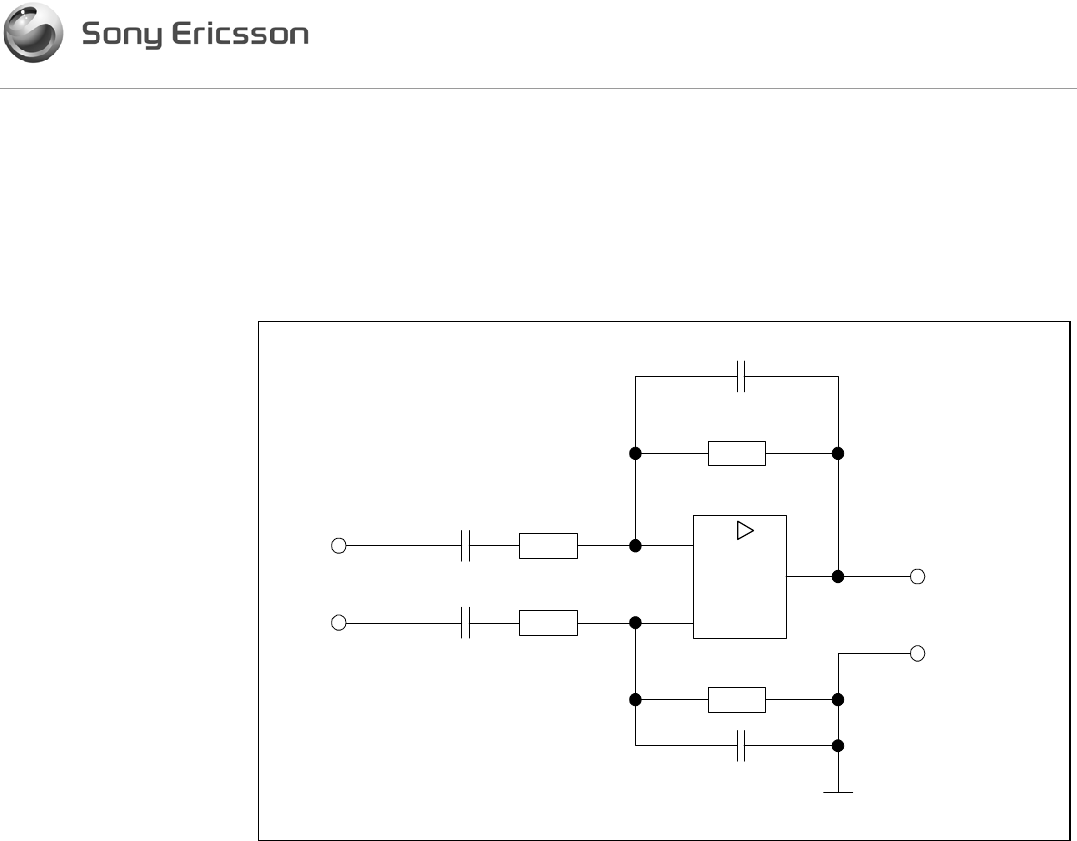
Confidential
USERS MANUAL 35(41)
Document number Revision
4/198 17-LXE 108 566 Uen PA6
3.4.5 Loudspeaker path
An application using the analog audio interface must re-reference the AFMS-signal from
AGND to its own internal BIAS. The figure shows a differential implementation. C1 is
chosen to create the correct HP frequency response. R1 and R2 determine the gain,
and C2 and R2 determine the LP frequency response.
0
-
+
0
R1
>=10k
R1
>=10k
R2
R2
C1
C1
C2
C2
BIAS
AFMS
AGND
Internal App +
Internal App -

Confidential
USERS MANUAL 36(41)
Document number Revision
4/198 17-LXE 108 566 Uen PA6
3.5 System connector IO functionality
Note 1: The application IO can be one of the following listed types:
•I Logic input (no pull up or pull down resistors required).
•IOC Logic open-collector input.
•O Logic output (no pull up or pull down resistors required).
•OOC Logic open-collector output.
•I/O Logic I/O.
The pin direction in this table is referenced from the application’s point of view.
Group Pin No Name Application Requirements App I/O
HW flow control is by default enabled in the phone module.
27 TD (DTMS) Logic output to phone module. The application shall set this
output high upon start-up. O
30 RD (DFMS) Logic input from phone module. I
28 RTS Logic output to phone module. Pulled down by the phone
module (R > 20k). The application shall set this pin low when
ready to receive data.
O
25 CTS
Logic input from phone module. This signal is initially set
high, indicating that the phone module is not ready to receive
data. It is set low when the phone module is ready to receive
data.
I
26 DTR
Logic output to phone module. This signal is pulled up in the
phone module (R > 20k).
This signal should be set low by the application during a data
call. A low to high transition will terminate the data call.
This signal is asserted by the application when it wishes to
open a communications channel. The phone module then
prepares the modem to be connected to the telephone circuit,
and, once connected, maintains the connection. When DTR is
de-asserted, the phone module is switched to "on-hook" to
terminate the connection.
O
Data
23 VPPFLASH/DCD
DCD: Logic input from phone module. This signal is set
default high. It goes low indicating that a data call is
established, (CONNECT) received from remote modem. The
signal goes high when data connection is disconnected.
Sent from the phone module (DCE) to the application (DTE) to
indicate that it has received a basic carrier signal from a
(remote) DCE.
VPPFLASH: The application shall not apply a voltage to this
pin unless they intend to use it as VPPFLASH in which case it
becomes a power output.
I/O
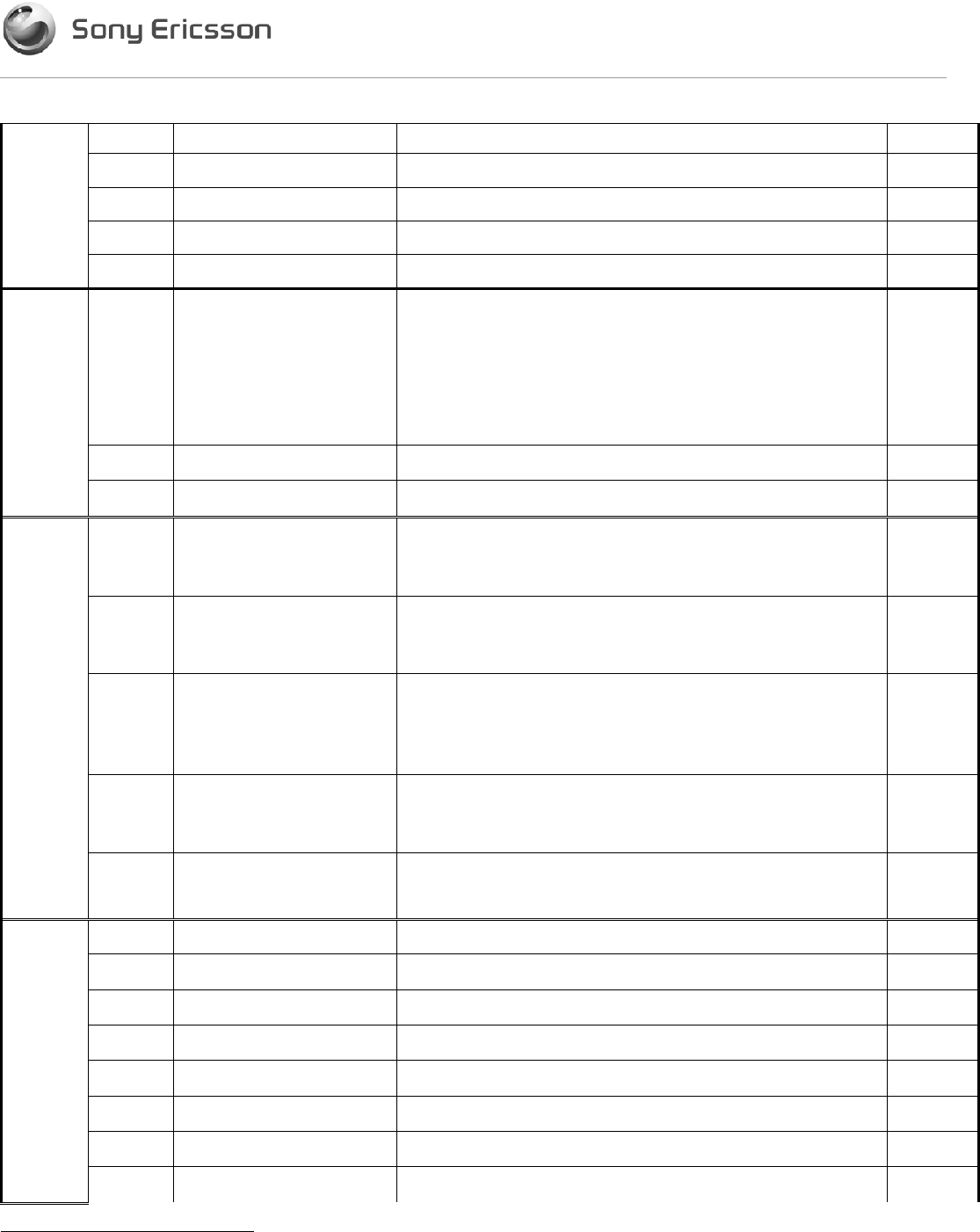
Confidential
USERS MANUAL 37(41)
Document number Revision
4/198 17-LXE 108 566 Uen PA6
Group Pin No Name Application Requirements App I/O
19 PCMULD Logic output to phone module. O
20 PCMDLD Logic input from phone module. I
18 PCMSYNC Logic input from phone module. I
PCM
17 PCMCLK Logic input from phone module. I
9 AGND
Analog reference. This signal is an analog reference
output by the phone module. This signal is connected
to GND in one place in the phone module. Under no
circumstances shall it be connected to any ground or
be used as ground in the application.
See 2.4 for more detailed information.
I
10 AUX1(ATMS) Single ended audio output to phone module. O
Analog
Audio
7 AUX0(AFMS) Single ended audio input from phone module. I
12 MODULE_PWR_EN_B Logic open collector output that is set low by the
application to enable power to the phone module. The
pull-up resistor resides in the phone module. OOC
2 VREF Phone module logic voltage sense input to application.
This signal provides the application with the logic
system voltage level used by the phone module. I
40 RI
This signal is used to indicate to the application of an
incoming voice or data call or SMS. The event is
indicated by the signals falling edge and remains low
for 100 ms.
I
24 RINGER5Pulse Modulated logic input from phone module. The
application must provide power amplification if the
current draw is expected to exceed 1mA. I
Status
15 HW_SD Bi-directional signal, default set to be an open collector
output from the application.
OOC
I
39 CFMS No termination. Leave open. I
37 CTMS No termination. Leave open. O
36 Reserved No termination. Leave open. IOC
35 Reserved No termination. Leave open. IOC
38 Reserved No termination. Leave open. O
4 IO_4_VRTC No termination. Leave open. I/O
3 IO_3_GPS_FIX No termination. Leave open. I/O
Unused
1 IO_1_TIMEMARK No termination. Leave open. I/O
5Not currently Implemented in the CM52.

Confidential
USERS MANUAL 38(41)
Document number Revision
4/198 17-LXE 108 566 Uen PA6
13 OUTPUT1 No termination. Leave open. I
16 INPUT2 No termination. Leave open. O
11 INPUT1 No termination. Leave open. O
Reserv
ed
14 OUTPUT2 No termination. Leave open. I
Table 18: Pin Direction for General Purpose Signals

Confidential
USERS MANUAL 39(41)
Document number Revision
4/198 17-LXE 108 566 Uen PA6
4 Functional Description
The CM52 module performs a set of telecom services according to TIA/EIA-IS-2000.
The functions of the display and keypad, usually used to make calls, are implemented
by issuing AT Commands over the serial interface.
See the CM52 Software User's Guide and AT Command Manual for a complete
functional description and user scenarios for the CM52.
5 Hints for Integrating the Module
This section, which gives you advice and helpful hints on how to integrate the CM-52
with the application, should be taken as a guide.
Note! The circuits on the test board are not shielded. Therefore, take proper
precautions for avoiding ESD and EMI.
5.1 Precautions
Here is a list of preparations that you should make before beginning the integration
work that is described in this section.
•Where to install the module.
•Safety standards
•Network and subscription
•Antenna
5.2 Where to Install the Module
Make sure that the module is installed so that the environmental conditions, such as
temperature, humidity, vibration, etc., are not beyond the limits specified for it.
Make sure that the signal strength is sufficient. To improve signal strength, move the
antenna to another position. Signal strength may depend on how close the module is to
a radio base station. Degradation in signal strength could be a result of disturbance
from another source, for example, an electronic device nearby.
You can verify signal strength by issuing the AT command AT+CSQ. See the CM52
Software User’s Guide and AT Command for a description of this and other useful AT
commands.
Tip! Before installing the module, use an ordinary mobile telephone to check a possible
location for it. Consider signal strength as well as cable length in determining the
location for the module and antenna. That way, you will find out if it is practical to install
the module where you intended.
5.3 Safety Standards
You are responsible for observing your country’s safety standards and the relevant
wiring rules, where applicable.

Confidential
USERS MANUAL 40(41)
Document number Revision
4/198 17-LXE 108 566 Uen PA6
5.4 Antenna
5.4.1 Antenna Type
When choosing an antenna for your application you must consider the following
requirements:
•The antenna must be designed for the AMPS/CDMA 800 and CDMA 1900 MHz
frequency band (dual band) for the CM-52.
•The impedance of the antenna and antenna cable must be 50 .
•The VSWR value should be less than 2:1.
5.4.2 Antenna Placement
Always follow the instructions supplied by the antenna manufacturer.
You should place the antenna away from electronic devices or other antennas. The
recommended minimum distance between adjacent antennas operating in a similar
radio frequency band is at least 50 centimeters.
If the module is used in the Class I AMPS mode, a separation distance of at least 20
centimeters must be maintained between the radiating antenna and the user or nearby
persons. In this mode of operation, the combined connection cable path loss and
antenna gain must also be no greater than 1 dBi.
5.5 Possible Communication Disturbances
Noise can be caused by electronic devices and radio transmitters.
Free Space Path-loss occurs as the strength of the received signal steadily decreases
with the distance from the transmitter.
Shadowing is a form of environmental attenuation of radio signals that is caused by hills,
buildings, trees or even vehicles. Inside buildings this can cause problems, especially if
the walls are thick and reinforced.
Multi-path fading is a sudden decrease or increase in the signal strength. This is the
result of interference caused when direct and reflected signals reach the mobile phone
simultaneously. Flat surfaces such as buildings, streets, vehicles, etc, can reflect
signals.
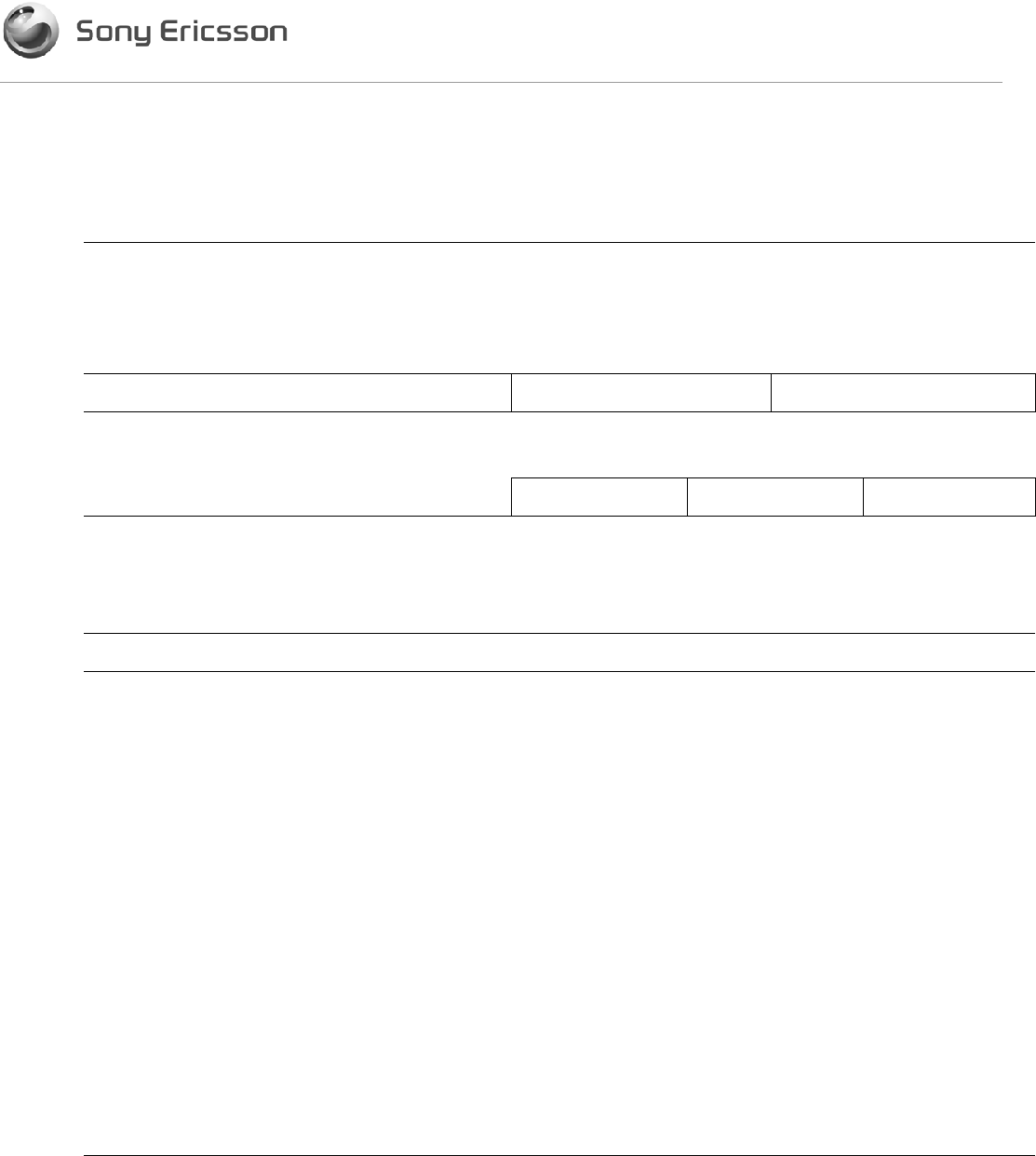
Confidential
USERS MANUAL 41(41)
Document number Revision
4/198 17-LXE 108 566 Uen PA6
6 Technical Data
Mechanical specifications
Maximum length: 114 mm
Maximum width: 49.50 mm
Maximum thickness: 18.97 mm
Weight: 68.2 g
Power supply voltage, normal operation VCC_MAIN VCC_AUX
Nominal Voltage: 5.00 Volts 13.8 Volts
Voltage range: 4.50 – 5.50 Volts 11.0 – 16.5 Volts
Radio specifications AMPS CDMA (BC-0) CDMA (BC-1)
Frequency range: TX: 824 – 849
RX: 869 – 894 TX: 824 – 849
RX: 869 – 894 TX: 1850-1910
RX: 1930-1990
Antenna impedance: 50 50 50
VSWR (Maximum): 2:1 2:1 2:1
Environmental specifications
Operating temperature range: -30°C to +70°C: EIA/TIA/IS-2000
+70°C to +85°C: –3dB Degradation beyond +70°C Spec
Storage temperature range: -40 0C to +85 0C
Maximum relative humidity: 95% ±3% at +40 0C
Stationary vibration, random Acceleration spectral density (m2/s2): 0.96 2.88 0.96
Frequency range: 5-10 10-200 200-500
60 min per/axis
Non-stationary vibration, including shock Shock response spectrum I, peak acceleration:
- 3 shocks in each axis and direction: 300 m/s2, 11 ms
Shock response spectrum II, peak acceleration:
- 3 shocks in each axis and direction: 1000 m/s2, 6 ms
Bump: Acceleration 250 m/s2
Free fall transportation: 1.0 m
Rolling pitching transportation: Angle: 35 degrees, period: 8s
Static load: 10 kPa
Low air pressure/high air pressure: 70 kPa / 106 kPa